



































SOFT GRIP
Removable 2XCool liner features a honeycomb pattern silicone gripthat keeps the saddle comfortably in place.


KEEP YOUR HORSE COOL AND COMFORTABLE




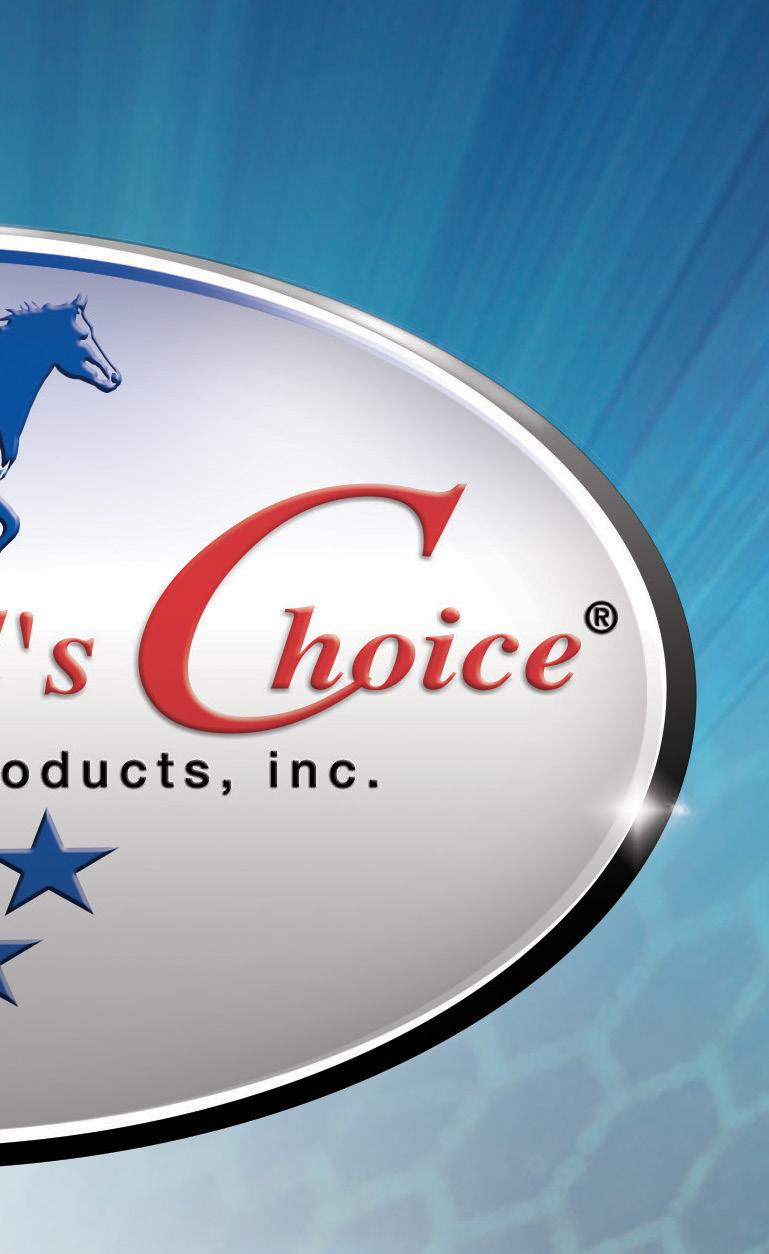






































Removable 2XCool liner features a honeycomb pattern silicone gripthat keeps the saddle comfortably in place.


KEEP YOUR HORSE COOL AND COMFORTABLE






infused in liner wick away sweat to help your horse stay cool and dry.
Innovative V Shape design creates a contour to allow for freedom of movement in the shoulder and evenly distributes pressure.




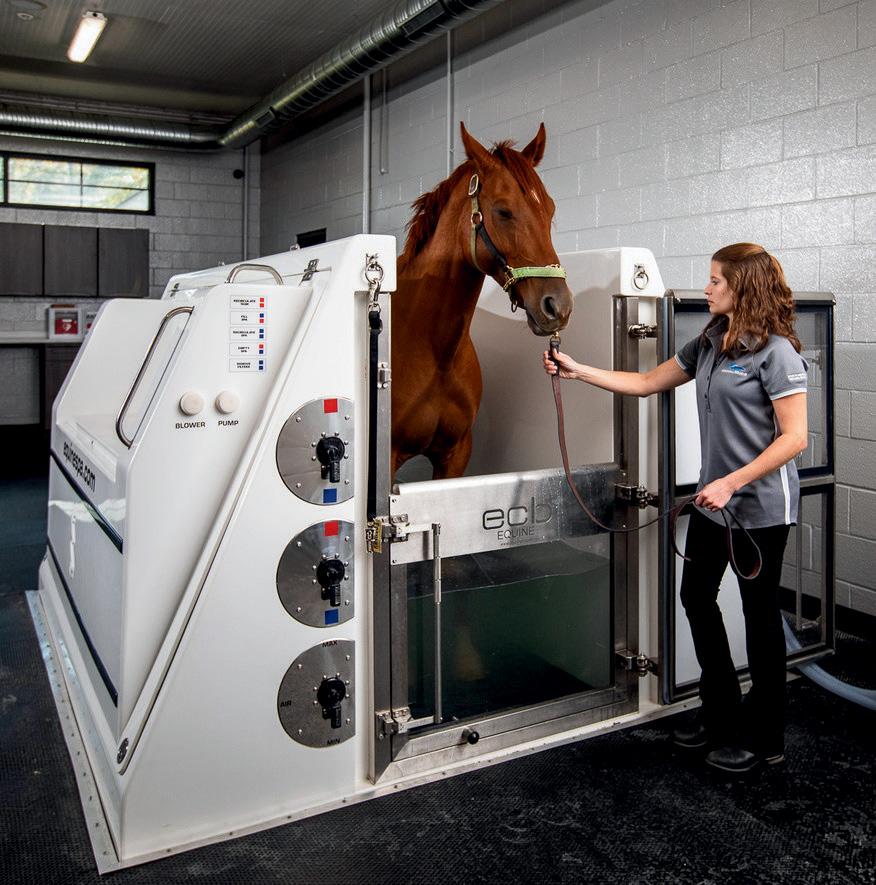



B.S. Equine Studies
•Equine Business Management
•Equine Training & Instruction
•Equestrian Media and Public Relations
•Therapeutic Horsemanship Management
B.S. Equine Science
B.S. Animal Health (Pre-Vet)


100% of incoming Freshmen receive scholarships averaging $27K and 95% of Transfer Students receive scholarships averaging $20K.















You


Scan to find their feed or visit FeedSentinel.com



Discover premium equestrian gear, handpicked from renowned brands across Europe and beyond. Equestrian Outfitters is your gateway to unique, high performance tack and apparel.

We source exclusive collections rarely found in mainstream tack shops, giving you access to the finest, most innovative brands from around the world. Our commitment to excellence goes beyond the products we offer. With decades of experience, Jeanie Clarke Equestrian brings expert insights into each collection, ensuring that every item upholds the standards you and your horse deserve.

We believe that the perfect fit is crucial. That’s why we offer both in-person and virtual saddle and helmet fittings, making our services accessible to riders nationwide.
Let Equestrian Outfitters enhance your riding journey with unparalleled products and personalized services.
Join the growing community of riders who trust us to bring them the best in equestrian style and function.







Designed in New Zealand, the Brave Pants collection of show jackets, shirts and breeches combines style with confidence, empowering riders to perform their best. Join the growing Brave Pants community and Be Your Brave every day.



From $2,450 (pony), or from $2,900 (horse) Saddle Fittings (in-person or virtual) Quality European brands: Ikonic, Amerigo, and Selleria Equipe

Second-hand options available





























FEB. 12-16 • WEEK I
FEI CSI2*/ National Hunter/ Level 5 Jumper
Florida Residents Enjoy 15% Off
FEB. 19-23 • WEEK II
FEI CSI2*/ National Hunter/ Level 5 Jumper
Junior Riders Enjoy 15% Off
FEB. 26-MAR. 2 • WEEK III
FEI CSI2*/ National Hunter/ Level 5 Jumper
Derby Participants Enjoy 15% Off
MAR. 5-9 • WEEK IV
FEI CSI2*/ National Hunter/ Level 5 Jumper
Adult Amateurs Enjoy 15% Off
MAR. 12-16 • WEEK V
FEI CSI2*/ National Hunter/ Level 5 Jumper
Circuit Championship Finale and the Split Rock Jumping Tour FEI CSI2*
Discover all new on-site lodging, dining & more to be announced!
Preliminary schedule with all-new class offerings and circuit championships now available to view!

Publisher & Editor-in-Chief
PIPER KLEMM, PH.D.
Managing Editor
RENNIE DYBALL
Art Direction
LINDA TUTOVAN / TRAN TUTOVAN DESIGN
Senior Editor
APRIL BILODEAU
Advertising
LARA BURAU
CLARE CIANCIO
STEPHANIE JONES
ALEXANDRA ROMAN
Subscriptions & Plaidcast Manager
CIRA PACE MALTA
Plaidcast Production
VICTORIA SHEEHAN
WEB: ThePlaidHorse.com
CALL: 541-905-0192
EMAIL: piper@theplaidhorse.com
Web Manager
PAYTON MEDFORD
Online Editor
MARLEY LIEN-GONZALEZ
Holiday Gift Guide
EMILY DICKSON / BIG WILD CREATIVE
SUBSCRIPTIONS: subscriptions@theplaidhorse.com
If you love horses, check out our high school Equine Science Concentration! This isn’t just another class - it’s a tailored track within our college-prep curriculum, crafted to set you up for success in the equine industry.











Stable & Horse Show Management
Stable & Horse Show Management

Equine Anatomy & Physiology
Equine Anatomy & Physiology
Equine/Small Business Math
Equine/Small Business Math
Equine Nutrition & Wellness
Equine Nutrition & Wellness
History of Horse in Sport History of Horse in Sport
Internship Opportunities Internship Opportunities
Grooming for Success
Grooming for Success























C O N G R A T U L A T E S
C O N G R A T U L A T E S
C O N G R A T U L A T E S

2 0 2 4 T a y l o r , H a r r i s I n s u r a n c e S e r v i c e s M e d a l C h a m p i o n s
2 0 2 4 T a y l o r , H a r r i s I n s u r a n c e S e r v i c e s
2 0 2 4 T a y l o r , H a r r i s I n s u r a n c e S e r v i c e s M e d a l C h a m p i o n s
m p i o n s
B l y t h e G o g u e n
B l y t h e G o g u e n
B l y t h e G o g u e n
T H I S N H S A d u l t 1 8 - 2 1
T H I S N H S A d u l t 1 8 - 2 1
T H I S N H S A d u l t 1 8 - 2 1
C h a m p i o n
C h a m p i o n
C h a m p i o n
B r o o k e H a g e r t y
B r o o k e H a g e r t y
B r o o k e H a g e r t y
T H I S C h i l d r e n ’ s M e d a l
T H I S C h i l d r e n ’ s M e d a l
T H I S C h i l d r e n ’ s M e d a l
C h a m p i o n
C h a m p i o n
C h a m p i o n




O N G
T U L A T E S
C O N G R A T U L A T E S
C O N G R A T U L A T E S

2 0 2 4 T a y l o r , H a r r i s I n s u r a n c e S e r v i c e s M e d a l C h a m p i o n s W y n a t t e C h u T H I S N H S A d u l t 3 6 + C h a m p i o n
2 0 2 4 T a y l o r , H a r r i s I n s u r a n c e S e r v i c e s M e d a l C h a m p i o n s W y n a t t e C h u T H I S N H S A d u l t 3 6 + C h a m p i o n
3 5 C h a m p i o n 2 0 2 4 T a y l o r , H a r r i s I n s u r a n c e S e r v i c e s M e d a l C h a m p i o n s W y n a t t e C h u T H I S N H S A d u l t 3 6 + C h a m p i o n
i o n

































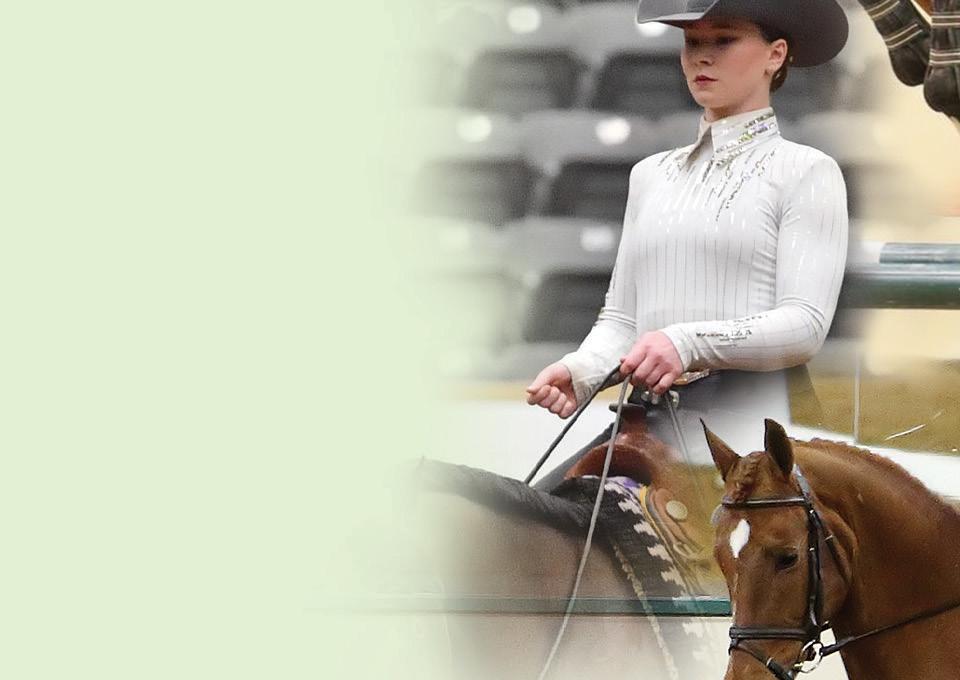




“In the soothing rhythm of hoofbeats, my daughter's giggles turned into words. At Speaking of Horses, challenges are overcome and confidence blooms."
- Parent

Meet Ada
Ada Haensel is a licensed speechlanguage pathologist (CCC-SLP) and equine expert based in Virginia.
With an advanced degree in communication sciences and disorders from the University of Virginia, Ada created a practice that leverages her groundbreaking research around the benefits of animal-assisted therapy.
Her philosophy is unique; she combines human-animal interactions with speech therapy in tailored sessions to foster a sense of joy, curiosity, and connection.
The outcome is a vibrant, nurturing environment, where children discover their voices and thrive in the process.
Speaking of Horses is a unique practice that incorporates animals into speech therapy sessions. Through activities like speaking, feeding , giving commands, playing, and experiencing equine movement, children work toward their speech goals while develop ing confidence in a natural, supportive setting.
Based on research featured at the prestigious National Convention of American Speech and Hearing , Speaking of Horses offers a safe, nurturing, and fun-filled environment where children not only thrive , but eagerly anticipate each session.
Customized for each individual client, sessions address therapeutic goals via a captivating exploration of communication and connection.
Incorporate Joy into Your Child’s Therapy Sessions
Contact Ada today to schedule your child's transformative journey.
• Phone/text: (571) 535-1217
• Email: speakingofhorsesincorporated@gmail.com
Please Donate!
Speaking of Horses is a 501(c)(3) organization 100% of donations are applied to student scholarships or horse care. Donations of any size make a world of difference to our pediatric clients. Please donate via the website.





AS SOON as I made the announcement for our rst ever Plaidcast LIVE! event, literally eight years in the making, the texts and emails started pouring in.

“Will it be streamed?”
“Can I watch it later?”
“Where can I watch from home?”
The answer to all these questions was no. “You have to be there,” I said. This is not something you can stream while you’re in pajamas while you have ten other tabs open, scrolling Instagram. I watch things from home as well. I get it. They are tiny on your phone in bed and you half pay attention while you do a dozen other things. We know we should focus, but we have a million things going on and the endorphin rush is just plain so delicious and toxic.
To accomplish what you want, in today’s world…in yesterday’s world, in tomorrow’s world…you need to show up. In person, in real life, we need to listen, communicate, and absorb what our world has to o er.
That’s why we ( nally) did our rst ever Plaidcast LIVE on November 8 in front of a live studio audience at the Wadsworth Atheneum in Hartford, CT. Tickers were free and everyone gathered for an informal networking hour before the show started to meet people and
discuss ideas and experiences.
While most of you know that I jump right into things with both feet and work on perfecting later, this was something I wanted to get right o the bat. It caused me much stress— location, guests, and how to build a productive audience. As so much of my life had changed in great ways recently, now was the time to reserve the Aetna Theater at the Wadsworth Atheneum.
The Wadsworth is my view from every morning at The Plaid Horse o ce, and is the oldest continuously-operating public art museum in the United States. It represents so many of my values—supporting our local communities, access to art and education, the impact of being in the right place and space for creative growth, and their like-minded vision to welcome the equestrian community into their space. Murals of wild horses adorn the walls of the theater, which houses lectures, movies, plays, and community events almost daily, year-round.
While I’ve gotten good with guests over the years who like talking to horses more than talking to me, I knew that a



live event would be a di erent ball game for everyone. I needed guests who would be really comfortable with the format to make an inspiring experience for everyone who showed up. Coinciding with the Zone 1 annual clinic, Olympic Gold medalist Peter Wylde was the obvious choice, alongside his childhood mentors and current collaborators and Zone 1 stalwarts Fran and Joe Dotoli. I was able to open the event with my Equine A aire collaborator Alicia Harlov of The Humble Hoof Podcast.
We cast a wide net for a local audience and people in town for the clinic and Equine A aire, attracting folks from all over the US and Canada. The networking hour was rich and the audience was enthusiastic in the dark auditorium for over two hours—not a single phone made an appearance from the seats.
Small groups of people, productive discussion, thinking about the future, mentoring, and ideas about how we nurture success and advancement for ourselves and others…these are the ways we are going to grow this sport. It is something every single one of you has the power to do.
What are you talking about? Who are you talking to? How can you push more ladder down behind you instead of pulling it up? How can you use your own experience to create more pathways for others in the next generation? Making our sport better is something that every one of us can do, every day, and it is a choice that is in your hands.
And while you still can’t stream it, you can listen to an edited version of Plaidcast LIVE! on our regular Plaidcast feed at theplaidhorse.com/listen, Spotify, iTunes, Audible, or anywhere you listen to podcasts!

Piper Klemm, Ph.D.
TPH PUBLISHER
Follow me on Instagram at @piperklemm


THE PLAID HORSE is proud to announce the winners of its writing contest and business contest (from over 500 combined entrants!) as well as the winners of the Andrew Ryback Photography and The Plaid Horse Higher Learning Scholarship (pictured below)

FIRST PLACE
Allie Podhajsky ($2500.00)

SECOND PLACE
Leah Munoz ($1500.00)

THIRD PLACE
Anna Minich ($1000.00)
$10,000
THE PLAID HORSE
EQUESTRIAN VOICES
WRITING CONTEST
Grand Champion
Elizabeth Woolsy
Champions
Maggie Wolfe
Dana Ziter
Breanne Palmerini
Michaela Mangus
Sara Klimek
Reserve Champions
Susan Gilstrap
Elizabeth Straebel
Phoebe Harper
Sue Ellen Marder O’Connor
Mary Shelley-Snell
Ashley Kelly
Tracy Mask
Fiona Lorenzen
Kim Flynn
Catherine Doucette
THE PLAID HORSE
EQUINE IMPACT
SMALL BUSINESS CONTEST
Grand Champion
HorseGrooms / Dinette Neuteboom
Champions
Lucky Braids / Ruthann Smith
Speaking of Horses / Ada Haensel
RingSide Pro / Emma Fass
EyeOn Equine Care / Douglas Spatz
Extend Equine Massage / Caitlin Looney
FireHorse Rescue Kits / Holly Johnson
EquiSol / Jackie Jolie
ShowMD / Barb Blasko
Bit-Tex / Katie Burr
Active Riding Trips / Stacey Adams
Reserve Champions
Equestrymen / Edward Oeltjen
Forcara Bonnets / Kristin Ludington
Freely Forward Bodywork / Maija Liisa Luttinger
Brave Accounting (The Equestrian Business Academy) / Sarah Judson
EqPI (Equine Performance
Identities) / Kaitlin Hendry
Justbe Equine Bracelets / Wendy Brownlee
Indigo Ancestral Health / Stephanie Carter
Riding Far / Paul Haefner
Show Ring Essentials / Gail Rezendes
Sport Horse Alchemist / Kelsey Grif ng
Honorable Mention
Instagrooms / Danielle Burgess
Dubois Cheval / Morganne Young VanderZicht Stables / Lauren VanderZicht
The Boujee Equestrian / Shauna McKenzie
EqRack / Sophie Johnston
OneReDone / Melanie Hall

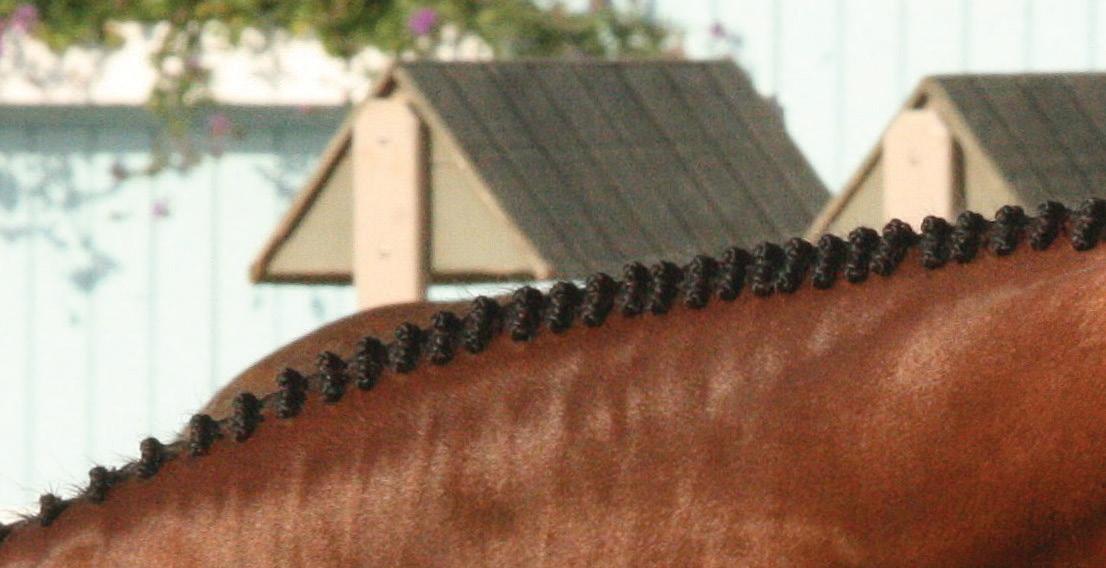




































WORDS: JESSICA FARTHING
A CAREER in the equestrian world will always benefit from a foundation in business education.
The University of Louisville in Kentucky offers an equine degree program that’s part of our accredited business school, giving horsemen and women the opportunity to bolster their business skills.
Dr. Amy Lawyer, the Equine Industry Program department chair, worked in reproductive science and barn management before taking on her current role—a prime example of the program’s real-life application. Her story is like many of her fellow
University of Louisville graduates. Lawyer wanted to make a career as a manager at a large breeding farm. Her undergraduate training provided foundational knowledge and achievements through targeted internships and focused learning. That was the launching pad for her next step,



being admitted and becoming a graduate teaching assistant at Colorado State in their equine reproduction lab.
After earning her Master’s degree, she worked at a large farm in Lexington, KY, but found herself frustrated by antiquated practices and a lack of innovation.
She made the decision to lean on her teaching experience, finishing her Ph.D. at the University of Kentucky. A position opened at the University of Louisville and she’s come home to help others get the head start that she enjoyed.
“I truly believe in what this program does and how it prepares students to enter the industry and actually have long-term career success,” she says.
Lawyer and other faculty teach students skills like identifying a target audience, acquiring and maintaining customers, filing taxes, managing employees, and understanding liability. She feels these basics of business are vital in the horse industry. By filling this need, students are more protected from a business and financial standpoint when they become professionals.
“We see our students climbing the ladder way faster. They’re able to fill a lot of those management or leadership roles because they have that understanding of how business works,” says Lawyer.
That grasp of what makes success in the horse industry isn’t just for students. Most of the professors involved in the program maintain other business ventures in the horse world.
“I think one of the benefits our program has is that almost all the faculty and staff have financial interest in the horse industry outside of our academic, 9 to 5 jobs,” adds Lawyer.
That practical experience shows up in the classroom, providing real world examples for curious students. Lawyer knows that personally, running a breeding operation with her husband on their own farm.
The school’s versatile program isn’t designed for just one discipline. It provides a base for a whole range of career opportunities, making inspiring the future entrepreneurs and innovators of the industry their focus. The course curriculum
focuses on management and leadership skills as well as the basics of business and finances. Just like any other business undergraduate at the college, the equestrian-based students graduate with a Bachelor of Science in Business, making their degree fit any choices they make in the future.
There’s beauty in a degree that’s based in a broader category. Students who want to bridge into other, less specialized opportunities can take their diploma beyond horses, or stay within the equestrian pathways. Either way, there’s an additional layer of versatility to the program at University of Louisville.
“You can get a job pretty much anywhere with a business degree. It equips our students so much more to be prepared for the job market,” says Lawyer. “They get an intro into every single business discipline and then we do a deep dive into the horse industry.”
“Our curriculum is really intentional. It has the flexibility for the student to make it their own, to focus on their own area of interest.”
The college has connections that give a wide choice of placements for internships, as well. “Kentucky is so pro-horse. We see a lot of kids coming from out of state here, falling in love with the idea of Kentucky and the importance that we put on the horse industry,” Lawyer says.
“Because of that, there’s somebody within an hour radius that does the job that a student is interested in.”
Despite the wide range of potential careers after college, the business end of the training is the thread that ties everything together.
“It’s always fun to have a meeting at Churchill Downs and run into eight of our graduates doing different things. They’re just all over the place, in different capacities.”
Lawyer knows the proximity of the iconic equine facility is a bonus, but sees no limit in the choices for her students because of the individualistic approach to education given at University of Louisville.
“It’s really our job as a university program to expose students to all the different opportunities that they have.”



Classical Shine OOM, Sidecar OOM, Everlasting Shine
Classical Shine OOM, Sidecar OOM, Everlasting Shine

Sidecar OOM (2022)
Sidecar OOM (2022)
Bliss MF, o/o Sip of Moonshine/Shine
Bliss MF, o/o Sip of Moonshine/Shine

Shine OOM (2023)
Shine OOM (2023)
W/Contendro


Everlasting Shine OOM (2022) By Shine, o/o Bristow de Balou/Balou du
Everlasting Shine OOM (2022)
Shine, o/o Bristow de Balou/Balou du Rouet

On Me OOM (2024)
On Me OOM (2024)
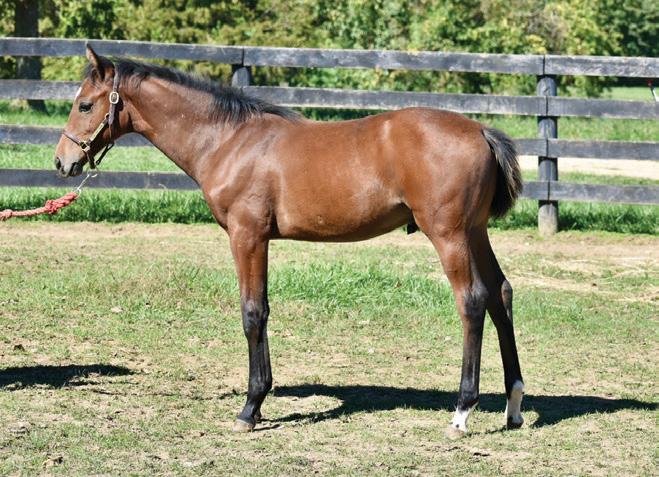






WORDS: ELIZABETH WOOLSEY, DVM
TRUE STORY…
When I put on my old work jacket, I’m reminded of my professional career. The lining is almost gone, but the jacket is still warm, and my clinic logo is still visible. It hangs in my closet as a memory of times past. It still smells and feels like my old life in Australia. The stories that jacket could tell…
I was an equine veterinarian who moved from California to Australia. I loved my ‘All Horses Big and Small’ practice. I saw the spectrum of the great and wellbred to the common but well-loved horses in my practice. The variety of horses and their guardians made each day a challenge and a joy. How lucky was I?
I am also a quilter. If I made a quilt for all the memories from my practice life, it would stretch for miles. The fabrics and colors would weave and wave from rough to satiny smooth, and from the gold of palominos to the reds of chestnuts. Here is the story of a Christmas that started with a carrot and ended with a glass of wine. But, in truth, this story never ended and to this day, I cannot talk about it without a failed attempt to harness my emotions.
Merve Schutte had given his mini mare a carrot which lodged in her throat, and the black and white paint mare was in strife. A Southern hemisphere Christmas can be enjoyed in your swimming costume in the pool with a Mai Tai in hand. Hot, hot, hot. The heat and the dry conditions of the driest state on the driest continent cannot be overstated.
So, when Merve’s little mare inhaled the carrot, she didn’t waste time chewing it and swallowed it whole. Only her esophagus didn’t play nice—not at all. The carrot became lodged in the middle of her long neck and wouldn’t budge. The technical term would be esophageal obstruction, but the common term is choke.
Horses are unusual creatures. They produce gallons of saliva during the day. So, when they can’t swallow, the saliva has no place to go. Horses o en panic and many throw themselves on the ground as they struggle to clear their mouth and trachea from the saliva which eventually comes out of their nose. They appear to be choking, which would suggest the blockage is in the trachea, but it ain’t so…
A er a quick visit to the end of civilization where Merve and Maureen live, I had a feeling my Christmas festivities might turn a bit “festy,” as my kids would say. With no relief from my rst attempt to clear the blockage, I asked Merve to bring the little mare to the clinic.
Chokes can be tricky. Most resolve
without veterinary intervention, but a carrot would not break down on its own, so the plan was to lubricate the esophagus and relax the musculature to allow passage. The esophagus is an interesting thing. One part is surrounded with smooth muscles, which is like the muscles that propel food through your intestines, and the other part is striated muscles like your biceps and triceps. Di erent drugs work in di erent areas along the esophageal structure.

The father raced out as I was driving away. “Thank you. How much do I owe you?” I knew this was going to be my best and worst Christmas present ever.
My approach is commonly described as ‘everything but the kitchen sink.’ I’d administered sedation, anti-in ammatories, and one that works on the smooth muscle to relax the esophagus, and nally the last medication helps the esophageal muscles push the bolus, or in this case a dry carrot, down the pipe. Since it’s South Australia and stinkin’ hot, and the little mare couldn’t eat or drink, I had to administer intravenous uids. Kill me now. I had so much to do to prepare for Christmas, and the last thing I wanted was a sick horse at the clinic.
I was on my own for the holidays. This Christmas was the rst and only time I could remember I didn’t have a sick horse or an ovulating mare that
might need insemination in years. Heck, I had people coming for dinner. I always cooked a turkey with stu ng and all the traditional trimmings from my American heritage. I would o en have ten to twenty people come for the Christmas Eve dinner.
Around lunchtime on Christmas Eve, I attempted to pass a stomach tube on this sweet little mare, and, oh joy—Christmas on a stick! The tube went all the way down the esophagus to the stomach. The carrot had passed! I got Merve on the phone and told him if he didn’t come and get her; I was raising the rent. Problem solved, get out the eggnog and let’s get this party started!
About two hours before the guests arrived, my neighbor came over to help with the preparations. Everything was ready. The turkey had another hour or two to cook, and there was nothing to do but set the table and eat Christmas almonds. When the phone rang, I knew this wouldn’t be good.
An elderly couple had a horse that they’d cared for when their daughter grew up and moved away. This was a common occurrence in my practice. I knew many older couples who kept their child’s horse until the now-adult child was able to take the burden away from the parents. The adult children rarely resumed care, and so the parents took responsibility and sacri ced to care for the aging horses. This horse had a large laceration on her hind leg. They couldn’t reach their daughter, and they never handled the horse. They just fed it. They were upset, and their regular vet was unavailable.
“I’m sorry, I’m not able to come. Who’s your regular vet?” I had a pretty good idea who their vet was, and like me, he was probably getting ready for his Christmas dinner.
“Well, good luck. I wish I could have helped,” I said. The all-consuming guilt when I turned down a call reared its ugly head once again.
I had a slight chance they wouldn’t
ring back, but I was surprised when their neighbors and my good friends, Fiona and Rodney Warren, called and begged me to come. They were on their way home from their business Christmas sta party and promised to meet me to care for the horse.
My early guests overheard the conversation. As horse owners, they knew how the couple would worry. They insisted I attend the poor horse. They would watch the turkey. I was relieved. I hate myself when I turn down any emergency call. I took my suture kit and headed for the hills. I arrived to see the owners standing on one side of a barbwire fence and the horse on the other. Her legs were scratched and there were two large lacerations on one hind leg.
The owners mentioned she was ancient. They repeated this several times. She didn’t look old, but I got the message. This injury might be the excuse they sought to end their burden. I haltered her and examined her mouth. She was in her late twenties.
That would be enough for most people, but I had three horses in their thirties. The elderly couple’s ability to deal with such an injury was limited. If it couldn’t be done across the fence, it would not be done. The mare frightened them.
I asked them to hold the rope over the fence. Fiona and Rodney were not home yet, and the daughter nally responded and was on her way. I had no time to spare. I cleaned and dressed the wounds. They would heal even if I didn’t stitch them. As I applied the nal wrap, the daughter and the Warrens all drove up. They all were shocked.
“What?” I was perplexed. They told me that the mare was wild, and they couldn’t believe I had treated her without even a sedation.
“Well, I did. She was great. I would have preferred to suture two of the wounds, but they will heal. What’s her tetanus vaccine status?”
We all turned to the daughter, who shook her head. “I don’t remember her getting one since I stopped riding.” I crawled through the fence and got penicillin and tetanus. I returned and tapped her neck to place the tetanus needle into her neck. ‘Needle shy’ would be an understatement. The mare reared up, pulled the rope away from the daughter, and ran to the far end of the paddock, shot through that fence and then a second fence.

I know my peers and I are a dying breed. Times and values have changed. I accept this and know it is a correction that must occur in my profession. But who will attend the next dying pony or horse when a desperate owner calls?
I looked at everyone and shook my head. I could do everything with oral meds, but the tetanus vaccine was non-negotiable. I glanced over at Fiona and Rodney, who were experienced horsemen. We didn’t say a word. While this nightmare would go on for the owners, I was about to leave. I handed Fiona the tetanus and said I’d done all I could.
As I walked to the car, the daughter asked me to wait: “It’s time. I can’t ask my parents to keep doing this, and I just
can’t get over here to care for her. How did you get the halter on her? I haven’t been able to catch her for two years. She’s twenty-nine and she’s had a good life.”
Fiona, Rodney and I were able to trap her in a small enclosure on their property and she was humanely euthanized. She was well behaved when she knew she had an expert holding her. While I knew the mare could survive, I could see the relief and guilt on everyone’s face. I am a ‘no-judgement’ vet. This horse would have lived, but at the expense of the elderly parents. I knew they would feel guilty, but it wouldn’t come from me. I explained I was already late for my dinner party, and I would send them an account a er Christmas.
I le and headed back to the clinic and my home. I needed to get back to my festivities. The regulars were arriving, including people from the local veterinary school and my adopted kids. The party was starting. When asked about the call, all I said was, “one for the books.” I didn’t elaborate.
As I began preparing string beans and potatoes, the phone rang again. It was Fiona. “Just tell me the horse hasn’t returned to life.”
“Uh, no it’s worse.” Fiona paused. “You’re going to hate us.”
I knew my plans for dinner were fading fast. “In twenty minutes, I’ll have thirteen people here for dinner.”
“We hate to do this.” Fiona was audibly upset. Rodney was one of my ‘funeral directors.’ He had a backhoe, and he was summoned at all hours to bury horses. He didn’t hasten their deaths, but he did the nicest burial of all the men in our area.
“Go on.” I was curious.
“There is a little girl whose pony has colic. I’m sure it only needs to be put to sleep, but they can’t get anyone, and the pony is in terrible pain. All you have to do is come up and put her to sleep.”

“How far away?”
“It’s near us. We hate doing this, but…” My neighbor heard my part of the conversation. She pointed to my car. “I’d hate you if it was mine and you didn’t go. We can all wait.”
Thirty minutes later, I arrived at a small property in the hills above my clinic and the Adelaide Plains. The pony was on her back in a dilapidated old round pen. She rolled back and forth. She was sweating and covered in dirt. Her abdomen was distended, and she was grunting. The young owner was distraught. Her father held her by her shoulders. She was covered in dirt and straw. Her face had two brown lines where her tears had collected the soil, and her blonde hair was full of straw and leaves.
Fiona was there, but Rodney was on his way with the backhoe. She took me aside and told me the story. The pony was recently given to the girl for her twel h birthday. The parents were what Australians called ‘battlers.’ Money was de nitely an issue. Fiona guessed the only course of action was euthanasia. She asked me to con rm this.
Fiona then quietly explained that the girl had asked her parents not to buy her any Christmas presents other than a new blanket for the pony and put any money toward a stay at pony camp, which would start in a few weeks. She had raised most of the camp fee by doing odd jobs in the neighborhood. She only had the pony for a few months.
I climbed into the round pen and had to crawl on my hands and knees to assess the pony. She was violently rolling, and I couldn’t approach her standing as I might have been hit with a hoof. She was bloated, sweating profusely, and her gums were purple. She had the smell of horse vomit, showing the extreme backup of uid in her stomach. She was dying. As I climbed out of the pen, the family saw my face. The woman cried as the daughter screamed. The little girl tried to
rush to the ailing pony, but her father stopped her. They took her into the house a er I explained to the little girl that the kindest thing was to euthanize the pony and stop the pain. Despite this, I knew the child was beyond any comprehension of the gravity of the pony’s medical prognosis.
A few of the neighbors were standing around the pen and whispering to one another. They would stare away and shake their heads. Earth, swallow me now. I hated my job at that moment. I wanted to leave, but I had a duty to this little pony to hasten her death and stop the pain.
I returned to the pen with a syringe of heavy sedation and analgesia. This time, I was able to get a needle into her vein and sedate her. I then ended the poor little pony’s agony. I listened to the heart for several minutes to ensure her su ering was over. I wanted to get out of there and get back to my friends. What I really wanted was to get away before I cried. I try to present as the dispassionate veterinarian, giving professional advice, but not this time. My eyes were brimming and red, and I hadn’t even bothered to clean myself before I returned to my car. Fiona was mouthing, “thank you.” She was crying too. It would be a long time before she and Rodney would get home for their Christmas dinner.
The father raced out as I was driving away. “Thank you. How much do I owe you?”
I knew this was going to be my best and worst Christmas present ever. “Nothing. The people I saw before you paid me a bonus and asked me to pay it forward. I’m so sorry I couldn’t help.” He thanked me and returned his wallet to his pocket.
I suspected this would be this family’s last involvement with horses. I was heartbroken. I didn’t wait for a reply. I drove out of the driveway and down the road, where I stopped and cried. It
took several minutes before I could even drive away. I snuck into the back door, changed my dirty clothes, and washed my tear-stained face. I returned to my party, and everyone asked about the call. “All sorted,” was all I said. I don’t think I fooled too many that night. That memory has haunted me for years.
I know my peers and I are a dying breed. Times and values have changed. I accept this and know it is a correction that must occur in my profession. But who will attend the next dying pony or horse when a desperate owner calls?
I told the story to a class of veterinary students last year. I received a message from one student who said she wants to be the person who goes to the aid of a sick pony at Christmas. My father was that vet before it was my turn. Maybe I met my replacement? Maybe there is a way for the new generation to ll the void.
While my jacket sits in the closet, and I only occasionally wear it, I treasure what it represents. I wonder if the young veterinary student will look back on her career. Maybe she’ll keep her own garment and remember how this story inspired her.





Without the power of a good horse beneath you, a jump can look like something in the way on the path to your goals, hopes and dreams. But with the partnership of a good horse, anything is possible. When you are only as strong as the horse you are riding, choose trust, choose versatility, choose horsepower; choose The American Quarter Horse.
“The Best Horsewomen They Can Be”
WORDS: JESSICA FARTHING
FROM KINDERGARTEN all the way through college prep, Garrison Forest School prides itself on developing horsewomen of empathy, curiosity, and confidence.
The school is based on 110 acres in Owings Mills, MD, and has a co-ed daycare and preschool, and an all-girls K-12. And in their equestrian program, the school is focused on an individualized program tailored to help each girl achieve her goals, opening the door to possibilities for a future equestrian career.






Some students choose to board at the school to take advantage of all Garrison has to offer. Whether that girl is local or from one of the international destinations that send students to Garrison, the residential program is an immersive way to learn and grow.
“It’s easier for some students who are active on campus. If you’re a riding student who lives on campus, the faculty sees you all the time,” says Michelle Placek, Garrison’s director of communications.
And if you are an equestrian, you only have to leave your dorm and walk down to the barns for your lessons.
It begins early for the girls. Riding and horsemanship classes start in lower school—Kindergarten through fifth grade—scheduling a lesson a week to be exposed to horses and learn the basics of riding. After the students learn to steer independently and trot well, they progress to after-school lessons. With any part of the equestrian program, the girls are family, no matter what level they ride on the talented horses at Garrison.
“We have the best lesson horses of anyone,” says Rick Harris, Director of Riding, “They can teach beginner riders and go to rated horse shows and compete well.”
Riders are given opportunities to show at rated and local shows, and on the Interscholastic Equestrian Association (IEA) team. Almost thirty riders of all ages and abilities participate on the team.
“It’s a great group of girls. Their sportsmanship is really cool to watch,” says Taylor Herzog, Assistant Director of Riding at Garrison.
There’s no better way to see that in action than the Big Sisters/Little Sisters activities for the team. Older girls become examples to their younger counterparts, helping to polish boots and adjust stirrups before competitions. They leave good luck notes and create surprises that spread joy among their teammates.
“Last year one of our middle schoolers qualified for Nationals, and the team made a poster to hang in front of her pony’s stall so that she’d see it before she left,” says Herzog.
The Garrison Forest Equestrian Institute (EI) is the pinnacle of riding at

“It’s a great group of girls. Their sportsmanship is really cool to watch.”
—TAYLOR HERZOG, ASSISTANT DIRECTOR OF RIDING
the school, where the instructors select athletes of an appropriate experience level to compete with the team. Everyone meets to discuss the commitment and drive that it takes to participate, giving reality to the dedication and busy schedule required to be a high-level equestrian athlete.
“We go as a group to shows in the Virginia, Maryland and Pennsylvania area,” says Harris. “And we also spend five weeks in Ocala, competing for two weeks, having one week off and then competing another two weeks.”
The team is able to participate in such a vigorous schedule because of the flexible planning offered by teachers and administrators at Garrison.
“They have a whole team of people who are dedicated to making sure they can pursue this unique opportunity while not falling behind on their studies,” says Harris.
The students get assignments ahead of time from their teachers, who also track their progress, checking in to make sure they get help. The riding staff proctors tests if the team is away for long periods of time, allowing the athletes to stay current in their classes. The teachers also celebrate their equestrian student’s achievements at competitions.
“In other schools, that happens for more traditional sports like soccer. For equestrian students, they are sometimes not as involved. Here at Garrison, equestrian athletes are seen as important members of the school,” says Herzog. Garrison’s riding program recently identified another need from curious students.
Notes Herzog, “Down at the barn we get a lot of questions from our equestrian athletes about what is available out there after college. We came up with an idea to have a college fair to offer collegiate opportunities.”
This serves a dual purpose for Garrison, getting the school on the radar with colleges that offer equestrian programs and allowing students to learn about those colleges. They’ll see representatives from the Savannah College of Art and Design, Washington and Lee University, Sweet Briar College, the University of Lynchburg and more. About twenty schools are signed up to attend to offer information on scholarships and every kind of equestrian path, from veterinary school to barn management. The community is excited for the event as well, and the event is open to local riders beyond those from Garrison.
The Garrison girl is prepared to have a life of purpose, she is academically challenged, and she is mentally and physically supported by caring faculty and staff. The equestrian program is a large part of this formula. Herzog recognizes the value of learning horsemanship in life, developing empathy, hard work, and goal-setting.
“It helps them excel in their equine endeavors and become the best equestrian and horsewoman they can be.”








WORDS: HALEY KOLLSTEDT
PHOTOS: WESLEYAN COLLEGE MARKETING TEAM
LIKE SO many of us, Alex Arute-Kacheris loved horses for her entire life. She got her first pony at four years old and began competing at seven.
Today, as head coach of Wesleyan College’s small but mighty equestrian team, made up of ten riders, Arute-Kacheris says, “I want people to know we exist.”
Wesleyan College, chartered in 1836, was one of the first colleges in the world to grant degrees to women, and to this day remains an all-female campus. Wesleyan prides itself on its top-tier education and opportunities it affords women. An especially unique experience Wesleyan offers is the chance to ride on its D3 Equestrian team. Wesleyan’s team is split into both hunt-seat (IHSA) and dressage (IDA). Once or twice a month, the team travels to collegiate circuit shows. In addition, Arute-Kacheris says that she likes to take the girls to smaller, local shows. “It’s all about learning and exposing them to all different levels of the sport,” she says.
The day to day regimen of team life strengthens the riders both in and out of the saddle. In addition to riding twice a
week, the girls are required to do three workouts to strengthen their leg, core, and back muscles. Some days they might be in the weight room. Other days, they might be found going out for a run.
Arute-Kacheris expresses her personal love for running and how she often hosts team runs. The team captains also host their own workouts so that conditioning never has to be a solo event. Aside from physical workouts, Arute-Kacheris wants to make sure the girls do not neglect their academic work. She requires a set number of weekly, mandatory study-hall hours, assigning freshmen a higher number of hours to ensure they are off to a strong start in their classes.
Every Friday, the girls have team practice at the barn. Arute-Kacheris explains how typically they will use three or four horses, take turns riding, and then switch horses, allowing everyone to have time
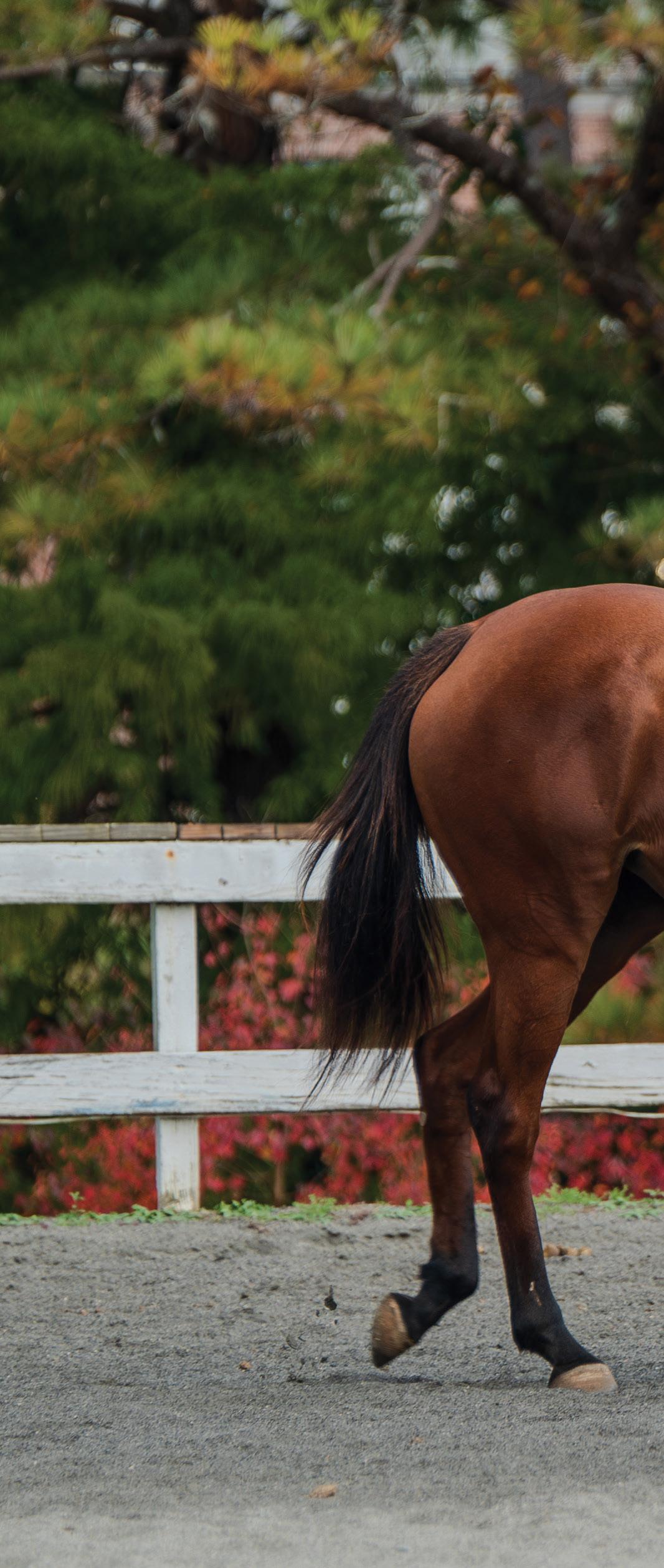
and experience on multiple horses and watching one another ride. The students are also assigned to a “companion horse.” Because college students do not often get to go home and see their pets, this allows them to have a pet away from home, getting to treat one of the school horses as their very own.
This program enriches both the students and the horses, as the students give special love and care to the horses, while the horses offer emotional support in return. Arute-Kacheris comments on how nice it is “to be able to walk from your dorm and go see your horse on the other side of campus,” while most college barns are off campus and not as easily accessible.
For Arute-Kacheris and her team, the door into the sport is open. As of this year, there are no tryouts. Being a D3

team, Wesleyan is not as “cutthroat” as a D1 team might be. Arute-Kacheris explains her philosophy as follows: “If the students had an interest in horses and wanted to show, I was game.” With this inclusivity, Wesleyan has been able to offer opportunities to riders of all experience levels. Out of the ten riders this year, four of them had never competed and two had never even ridden up until joining the team.
One of Arute-Kacheris’s riders, a student named Taylor, only started riding two months ago. Arute-Kacheris was able to take her to her first IDA show. Although Taylor had to push through the anxiety and stress that comes along with showing, she overcame her fears, walked into the ring, and performed. “Her goal was to get in that ring and just do it,” says her coach. “To see her be able to accomplish that and then step
ABOVE: Wesleyan Equestrian Team member Whitney McKinley riding Alice
forward and know she was just going to grow from there, it was awesome, and I know she really overcame a lot of her own challenges to get there.”
Arute-Kacheris exudes pride in her team and all that they have become. This year has been different for them, and in the best ways. The upperclassmen, having prior knowledge such as knowing many of the horses they might ride at the collegiate competitions, are able to give the underclassmen a figurative “leg up” to help them reach their full potential. But even the underclassmen are given opportunities to serve and lead their teammates. According to Arute-Kacheris, “Everyone has their role, everyone contributes. From the

Growing up, Alex Arute-Kacheris was able to ride and learn under a handful of esteemed trainers, including Missy Clark. She attended college at the University of South Carolina where she rode on their D1 equestrian team. After college, she experienced a bit of a “quarter-life-crisis,” realizing that she did not know who she was apart from horses. So, for a two-year stint, she stepped back and worked in human resources, contemplating where she was going and where she had been. But she could not stay away from horses for long. Her hunger to return to her passion overcame her, and she picked up various jobs riding and coaching at barns around the Northeast. A new job for her husband eventually landed the couple in Macon, GA, home of Wesleyan College. AruteKacheris jokes that she “ran into Wesleyan, saw horses,” and that was all she needed to see.
most beginner riders, they still help each other and are on the ground helping the upperclassmen. Everyone gets to participate. Seeing the girls happy and learning, that spurs me on to keep doing what I do.”
Olivia Troyer, captain of the dressage team, recollects the culmination of her time spent riding for Wesleyan. “The most impactful experience I’ve had on the team has probably been the overall learning experience. I’ve learned so much from many different perspectives, whether it’s the horses’ or my teammates’. My horse experience has grown tremendously by watching how differently people do things and also by riding so many horses with different experience levels and lessons to teach.”
Nieve Leyne, captain of the hunt seat team, adds, “I have loved being on the Wesleyan team since the day I joined my freshman year. Some of the girls who have come and gone through the team

have become my best friends, and people who I will be friends with for the rest of my life. I have become such a stronger rider because of the opportunities I’ve gotten by being on an IHSA team. I’m a better leader, horsewoman, and person

through being a student athlete and team captain. Horses and competing are something I want to have and do for the rest of my life, and the connections and experiences I have from Wesleyan will allow me to do this and continue to reach goals and milestones I’ve set out for myself in the horse world. I wouldn’t trade my experiences on this team for the whole world.”
Arute-Kacheris shares words of wisdom from Missy Clark for her team—and prospective teammates: “Never give up, and be consistent. You’re going to go in there some days and you’re going to feel like, ‘Why am I doing this?’ But it’s about doing it over and over and over again, grinding away at it, and every day getting a little bit better. The growth happens day to day, the little things getting more consistent every time you do it. You’re already winning if you get back up and you try again. The only way you can lose is if you quit.”



























USEF PREMIER/LEVEL 4 JUMPER *USEF NATIONAL/LEVEL 4 JUMPER
Winter Classic 2 12/4 - 12/8 2024
Winter Classic 3 12/11 - 12/15 2024

WEC Christmas 12/18 - 12/22 2024*
Winter Classic 5 1/8 - 1/12 2025
Winter Classic 6 1/15 - 1/19 2025
Winter Classic 7 1/22 - 1/26 2025*
Winter Classic 8 1/29 - 2/2 2025*
Winter Classic 9 2/5 - 2/9 2025

Winter Classic 10 2/12 - 2/16 2025
Winter Classic 11 2/19 - 2/23 2025
Winter Classic 12 2/26 - 3/2 2025*
Winter Spring Forward 3/5 - 3/9 2025
Winter Classic 14 3/12 - 3/16 2025
Winter Classic 15 3/19 - 3/23 2025
Winter Classic 16 3/26 - 3/30 2025
Winter Classic 17 4/2 - 4/6 2025











WORDS: KRISTINA LOTZ
TRAVELING WITH horses may appear to be a daunting task, especially when they need to be entrusted to someone else’s care. Whether you’re importing a horse, relocating, or flying for a competition, the process is complex and intimidating.
Horseflight was started in 2007 by Emil Spadone and Seth Vallhonrat to help relieve the stress while streamlining the process to make it as easy as possible on horse and human.
Horseflight, established in 2007 by Emil Spadone and Seth Vallhonrat, was created to alleviate this stress and streamline the entire transportation process, making it as smooth and easy as possible for both horse and owner.
“Horseflight was founded on the idea that we could provide a personalized experience for every client, differentiating us from the competition,” says Spadone. “Our clients are an extension of our team, and we treat their horses as if they are our own.” With over 50 years of combined importing experience, the owners are passionate about your horse flying first class, every time.
It’s completely normal to feel anxious about flying with your horse, and Horseflight understands that concern. Their dedicated team works tirelessly to alleviate stress, guiding you through every step of the process—from initial planning to the safe arrival at the barn after the flight. Familiarizing yourself with the process before you begin can also help put your mind at ease and make the journey smoother for both you and your horse.
While Horseflight can often secure a flight for a horse on short notice—sometimes within just a couple of days—planning ahead is always the best approach.
“We recommend giving us at least two weeks’ notice,” says Natasha Klingenstein of Horseflight. “This allows us to coordinate any necessary blood tests, book the grooms, and ensure the horse fits into the flight schedule alongside others that are already booked.” Planning ahead ensures a smoother and more organized process for both the horse and the team.
The required health documents and tests for your horse will vary depending on the destination and whether your horse is a mare, stallion, or gelding. Horseflight takes the guesswork out of this process by guiding owners through the necessary documentation. For example, when preparing for a domestic flight, owners will need to ensure that their veterinarian completes a health certificate and a current Coggins test, explains Klingenstein. For international imports, Horseflight handles all the necessary paperwork, including veterinary requirements, unless the owner prefers to be more involved. When it comes to exports, Horseflight works directly with the veterinarians to ensure that all documentation is accurate and up to date. “The paperwork for exports can be complex,” says Klingenstein. “There are multiple options







1 Two horses each in a stall and a half scanning the runway
2 Two jetstalls on the lift ready to slide into the plane and be locked in 3 Four foals loaded and ready to fly 4 Horseflight uses top of the line ground transportation providers to get your horse to/from the airport 5 Four jetstalls loaded at JFK and ready to be trucked across the tarmac to catch their flight to LGG
for importing into a foreign country, whether it’s permanent, on carnet, temporary entry, or household move. We make sure everything is in order.”
Unfortunately, unexpected issues can arise when traveling with horses. That’s why Horseflight strongly recommends owners secure their own insurance coverage for their horses. For customers who need assistance finding the right insurance, Horseflight partners with a trusted insurance company and can provide recommendations to ensure you’re fully covered during travel.
While you need to make sure your horse has the proper health requirements to fly, do not vaccinate your horse within 14 days of air travel.
All horses traveling with Horseflight need to be accompanied by a full hay net, an extra half bale of hay, water, and a bag of shavings. For imports and exports, Horseflight will provide these essentials, but for domestic flights, owners are asked to deliver these items with the horse. For the safety of the horse, Horseflight recommends using a breakaway or leather shipping halter during travel. If your horse is traveling with equipment, transporting it safely from point A to point B is essential. For domestic flights, each horse is allowed one standard trunk and a small item in the front of the jet stall. For larger items such as wheelbarrows and eurotrunks, or for multiple bulkier items, Horseflight can arrange for a separate cargo container. For imports and exports, all equipment must be shipped via cargo. Horseflight will handle the coordination of delivery to and from the cargo area, as well as the necessary documentation for your gear.
There are several steps you can take to make the journey easier and more

comfortable for your horse. If you’re traveling with a foal, Horseflight recommends pairing them with a buddy. Two foals can travel together in half a jet stall, while up to four foals can share a full jet stall, helping reduce stress and provide companionship during the flight.
Depending on the horse, Klingenstein notes that some owners choose to take additional measures to support their well-being during travel. These may include administering Omeprazole a week before and during travel and quarantine to help with gastric health, providing IV fluids the day before the flight, using ear plugs for noise-sensitive horses, giving electrolytes during the flight to prevent dehydration, and/or administering NSAIDs before and after the flight to manage any discomfort. “These measures are completely at the discretion of the owner and should be based on the individual horse’s needs and how they typically handle travel,” she adds.
Don’t forget about quarantine! Every horse importing from overseas is required to complete the minimum three-day standard quarantine. From there, geldings and horses under two years old can travel on to their final destination. Mares and stallions, however, must undergo additional CEM (Contagious Equine Metritis) quarantine, approximately 17 days for mares and 30 days for stallions. If you’re traveling for competition or a short round-trip stay, there may be exceptions to the CEM quarantine— provided you plan ahead and have all the necessary paperwork in order. “Mares and stallions traveling overseas
for less than 90 days can qualify for a CEM supplemental document,” says Klingenstein. “This document must be completed by a veterinarian before departure of each stop overseas, and the dates must be precise with no gaps. It’s the owner’s or trainer’s responsibility to ensure this form is filled out correctly. Only with this documentation are mares and stallions exempt from the additional CEM quarantine.”
During the standard three-day quarantine, you won’t be able to visit or see your horse, but Horseflight will keep you updated with photos and videos upon arrival, depending on the port’s regulations. This helps give you peace of mind as you await their release.
Traveling to the same destination as your horse? Don’t forget to plan your own ride! “We do our best to arrange for personal grooms on the flight if requested,” says Klingenstein. “The availability of groom seats on a flight depends on the number of horses traveling, especially for international travel. Exports are the easiest trips to accommodate additional grooms, whereas for domestic flights, grooms must undergo an approval process that can take several months and are typically reserved for those flying frequently.”
If you’re unable to fly with your horse, Horseflight will provide you with a detailed itinerary, so you can make your own travel arrangements with confidence. This helps ensure that you stay informed every step of the way while your horse is in transit.
To learn more about flying your horse, visit www.horseflight.com.










a live & active probiotic
A healthy microbiome is critical to gut health and your horse’s wellbeing and performance.
At Purina, we’ve developed Systemiq™ probiotic supplement to support your horse in a whole new way.



Systemiq™ supplement helps promote normal recovery after exercise and occasional gastrointestinal stress using our live and active probiotic.
Our probiotic strain is research-proven to survive manufacturing and the acidic stomach, so the little things can make a big di erence.


















WORDS: APRIL BILODEAU
PHOTOS: COURTESY OF SCAD
SAVANNAH, GEORGIA is known for its rich history, warm hospitality, and stunning landscapes. One of the city’s most widely known landmarks is Savannah College of Art and Design (SCAD). While the school’s creative focus is an attraction for many, its the esteemed equestrian team that’s the highlight for lots of incoming students. With numerous national championships to their name, SCAD’s equestrian team is a major part of the school’s legacy. The team’s base at the Ronald C. Waranch Equestrian Center sits on 180 acres, all of which are thoughtfully designed to acommodate SCAD's elite collegiate team that ride at the facility as well as students in the equestrian studies program.



“Being a SCAD equestrian athlete is all about dedication, teamwork, and constantly striving for excellence. Our championship success showcases the passion we bring to every competition and the longstanding commitment of past and current SCAD athletes.”
— ALEXANDER ALSTON, CURRENT SCAD STUDENT AND EQUESTRIAN TEAM MEMBER

While the top-notch amenities at the equestrian center are helpful to students, one of the keys to the team’s success over the last twenty years is credited to their head coach, Ashley Henry.
HENRY’S HISTORY
Ashley Henry attended SCAD through her college years, competing on the equestrian team under the tutelage of many distinguished trainers starting with John Conyers.
“I was in the graces of such incredible horse people,” Ashley Henry tells The Plaid Horse. “I’ve had a lot of influential people in my life.”
She was always very artistic, so when a teacher at her high school (Garrison Forest School in Maryland) suggested she check out the art and design school, she very quickly was sold.
“Seeing what the University had to offer as an artist, it wasn’t at all what she expected,” says Henry. “I fell in love with the city once I visited. I checked out Elon and Boston University, once I found out SCAD had an equestrian team, that was it.”
Henry earned her B.F.A in Metals and Jewlery, but also enjoyed all of the elective opportunities, such as Sculpture and Accessory Design, that SCAD had to offer.
Coming back as the coach was not something that Henry had planned. After college, she took an internship in New York City, but knew she was at a crossroads.
“I had spent four years of my life being a collegiate athlete,” says Henry. “I helped SCAD win their first national championship. I just loved having all the opportunities, but my heart was breaking because I thought I was going to have to give up horses.”
While Henry was weighing out her options, she received a call from the team’s director at the time.
“They said to me, ‘What are you planning on doing for the rest of your life?’ and offered me the opportunity for the job on the spot,” says Henry.
SCAD’S LEGACY
While the team had a great reputation before, under Henry’s guidance, the team has grown to a whole new level.
“My goal as the coach is not only to

create a winning team, but to keep up with industry standards and help riders look beyond their college riding career,” says Henry. “Everyone has the opportunity to continue their career as an equestrian.”
Team members are treated like every other athlete with a goal to set each rider up for success. The team has access to a sports medicine department, personal trainer, and a yoga instructor. They are also held to a high academic standard.
“So much of where I am today is credited to my time at SCAD and the equestrian team,” says Caroline Ingalls, a SCAD Alum and former equestrian team member who received a B.F.A. in interior design in 2013, and an M.F.A. in design for sustainability in 2014. “I learned valuable skills for balancing my love for horses, riding and competing, with a design career. Being part of a team in a sport that is typically so individual also showed me a whole new layer of this world. We can accomplish so much more together, mentally and physically, and that translates to many chapters of life beyond horses.”
Henry hopes to create well-rounded people, in and out of the barn. She and the team’s staff are involved in making sure that students have as many educational opportunities as possible and are able to evolve through their horsemanship and their knowledge.
“We want to make sure we are not just creating good riders in the tack, but also on the ground,” says Henry.
While creating good horsemen and
women is a core value of Henry’s, success in the show ring shapes some of her favorite memories.
“My most memorable moment that still gives me goosebumps is winning our first IHSA national championship in 2015,” says Henry. “The flight attendant made an announcement on the plane ride home celebrating the national champions and our whole team was waiting at the airport to surprise us and celebrate together.”
For those that are interested in joining the team at SCAD, Henry recommends starting with the right mindset to compete on a college team.
“The most important thing is to know who you are and your riding ability right now,” says Henry. “So many students think they need to make this giant leap to be eligible to ride on a collegiate team and that’s just not the case.”
At the start of each year, Henry starts each season like she’s never won before.
“I want to find the balance between success and happiness; I want everyone to be happy,” says Henry. “ I tell my whole team, new and old members, to take the lows as well as you take the highs. When we can learn to harness that passion we can bring out each individual athleticism and the fire to try and be better and win, while also being humble.”
To learn more about the SCAD equestrian team, visit scad.edu.


Blake Rowan
Blake Rowan
Blake Rowan
2024 NEHC Junior Hunt Seat Medal Finals Champion & High Point Junior Rider
2024 NEHC Junior Hunt Seat Medal Finals Champion & High Point Junior Rider
2024 NEHC Junior Hunt Seat Medal Finals Champion & High Point Junior Rider
Trained by North Run
Trained by North Run
Trained by North Run
Riley Conigliaro
Riley Conigliaro
Riley Conigliaro
2024 IHSA/USHJA 3'3" Hunter Seat Medal Finals East Champion
2024 IHSA/USHJA 3'3" Hunter Seat Medal Finals East Champion
Trained by Kate Stoffel-Oliver, Tammy Heuman, CEO Stables
2024 IHSA/USHJA 3'3" Hunter Seat Medal Finals East Champion
Trained by Kate Stoffel-Oliver, Tammy Heuman, CEO Stables
Trained by Kate Stoffel-Oliver, Tammy Heuman, CEO Stables
Sara Wytrzes
Sara Wytrzes
2024 NEHC Amateur Adult 28-45 Hunt Seat Medal Finals Champion, High Point
Sara Wytrzes
2024 NEHC Amateur Adult 28-45 Hunt Seat Medal Finals Champion, High Point
Adult Rider, Adult Grand Champion & Older Adult Sportsmanship Award
2024 NEHC Amateur Adult 28-45 Hunt Seat Medal Finals Champion, High Point
Adult Rider, Adult Grand Champion & Older Adult Sportsmanship Award
Trained by Grazing Fields Farm
Adult Rider, Adult Grand Champion & Older Adult Sportsmanship Award
Trained by Grazing Fields Farm
Trained by Grazing Fields Farm
WORDS: JESSICA SHANNON
FREEJUMP’S AIR VESTS and stirrups are synonymous with safety. Their products are approved and used in all arenas, including the hunters, where they are becoming more and more popular. The company is proud of their innovative designs for safety equipment while being leaders in the industry of safety technology in equestrian sports. As more and more riders are seeking ways to be safer in the saddle, Freejump provides advanced technology, beloved by professionals and many amateurs who proudly protect themselves with their highly regulated safety products.
Freejump was founded in 2001 in Bordeaux, France. Their headquarters remains in Bordeaux with a subsidiary in Montréal and an office opening in Miami, FL, by the end 2024, allowing them to focus on the hunter market after decades of success in eventing and jumpers. The company’s dragonfly logo symbolizes freedom and lightness, but it also represents the incredible technology behind a dragonfly’s flight capabilities— and Freejump’s products. Dragonflies have a unique ability to hover, fly backwards, and quickly alter their direction as needed. Freejump’s motto, Advanced Riding Experience, is fully lived out from design, to testing, to the arena.
BORN AND BRED IN BORDEAUX
Known as innovative safety experts, Freejump’s home in Bordeaux has in-house
testing, paddocks, and a jump arena between their offices, and additional spaces staffed by Butet, CWD, and Devoucoux. Horses are also stabled underneath their offices, and their herd is ready to join their human teammates in testing products. Freejump currently employs 35 people, including 5 engineers who are constantly improving upon their current line while creating and testing new products, including 12 new products in production. Freejump’s stirrups, airvests, and helmets are created, built, tested, and assembled in France. Many other companies have products built and assembled in countries far from their headquarters, limiting quality control. Freejump is able to view every part of the process. “We understand the product, because every stage of it is ours,” says Damien Aurenche, Freejump’s sales and marketing director.


STIRRUP SAFETY IN THE HUNTER RING AND BEYOND
Many hunter riders are putting safety above tradition. With Freejump’s product line, that classic hunter look can still be achieved while protecting yourself and your horse. Aurenche says, “Hunters don’t need to continue using lower-developed products as a sacrifice for traditional looks. Hunters and dressage riders will benefit a lot if they evolve like the eventing and jumper disciplines have.” Freejump invented what is now recognized as a safety stirrup, and they remain the leader of the technical stirrup. Their stirrups may be associated with the jumper ring, but they have been approved by USEF for use in the hunters since 2013. Julie Taglang, who is Freejump’s Director of Operations North America and based in Montréal, notes that Jimmy Torano rides


in Freejumps's stirrups. She says, “Our classic stirrup puts the rider’s leg in the ideal position for hunters.” Their Soft’Up Classic +, Air’Pure, and Air’S Stirrups are approved for the hunter ring.
Their original technical stirrup, released in 2005, was an L shape with a magnetic attachment keeping the foot in place. Due to the shape, a rider would be easily released from the stirrup in the event of the fall. The 2nd generation of the stirrups were reinforced with the full triangle, which has more even weight distribution, and they are unbreakable. Top riders report that they love the comfort of Freejump’s stirrups. Riders tend to refer to these stirrups as “safety stirrups,” but Freejump’s stirrups are so much more. The safety aspect of their stirrups is a bonus, and that feature is only needed if a rider falls. Their real feature, however, is
shock absorption. With regular stirrups, the horse and your joints absorb all force and weight. The higher the jump, the more weight the rider puts on the stirrup. Shock absorption holds that weight to relieve your joints and the horse’s back. All of Freejump’s stirrups absorb 30% of the shock, and Freejump is the only company who can stand by this claim with confidence.
Freejump’s stirrups have a single-branch spring steel design that acts as a suspension. Their testing hypothesizes that a 65kg (143lb) rider who rides their horse for an hour, 5 times per week, and averaging 30 jumps per week, will put about 230,000 joules (the equivalent of a 40 mph car crash) of pressure on the stirrups and, therefore, the horse’s back and rider’s joints. Freejump’s Soft’Up Pro+ stirrup, for example, reduces that impact by two thirds, compared to a traditional
stirrup. That comes out to reducing the pressure on the horse by 76,000 tonnes from 228,000 tonnes per year with a traditional stirrup. The AIR’S line of stirrups look more traditional and are built with an elastomer and mechanical system with the same incredible shock absorption. Freejump’s new stirrups have even more shock absorption. The safety features of their stirrups are a by-product that riders will be grateful for if they fall. For all other rides, riders can have peace of mind that they are protecting their horses by reducing the pressure on their horse’s back. Given the variety of models, these stirrups can be used to protect horses in all disciplines.

Voronoï: the next generation equestrian helmet made from high-quality polymer. With four protective layers and removable temporal protection, it provides unmatched safety. Lightweight, comfortable, ventilated, and customizable, it is available in gloss or matte black
Freejump created their own air vest and they own their own technology and service the product themselves. Once the Miami office opens, Freejump will be able to do any necessary service work on a rider’s air vest Stateside. While the US location can relieve some anxiety about having maintenance done closer to home, Freejump has also made adjustments to ensure riders of all disciplines feel comfortable competing in them.
Some hunter riders may remain concerned about what judges may think about air vests, but Taglang says that “Looking traditional and wearing an air vest is not an issue on the East Coast.”
Air vests are more and more popular in the equitation ring, too, and they were seen at both Capital Challenge and the Pennsylvania National Horse Show, including on medal final winner JJ Torano and many others. To ease any worries related to the traditional hunter look, Freejump began sewing their dragonfly logo onto their vests in black thread instead of white, making it virtually impossible to see the vest over a black hunt coat from a distance.
Freejump launched their first air vest in February 2020 and released their 2nd generation with their own materials and technology in June 2021. The latter was the first air vest to pass NF S72-800:2022 safety standards, the only official standards for equestrian air

vests. Their vests do not simply meet safety regulations but also protect against impacts along the spine. The vests fully inflate in less than 1/10 of a second. Their vests are comfortable and worn by top riders in all rings. Children as small as 55lbs, for instance, can wear a Freejump air vest. Israeli showjumper Ashlee Bond protects herself in Freejump’s airvest, as well as with their new helmet.
Freejump’s most recent innovation is their helmet, which will hit the US market in January 2025 and is already seen in other parts of the world. Their helmet is the only equestrian helmet to protect the temporal area, which is a standard protection in ski and motorcycle helmets. “The temporal area is the softest part of the head and worst part to hit,” says Aurenche. Freejump’s helmet looks beautiful while also offering protection on a crucial part of a person’s head.
Their helmets are are ASTM approved, and Virginia Tech has already given them 4 stars and ranked them 13th on their latest helmet test ranking. Freejump’s helmet might be significantly higher on the list, but Virginia Tech’s study does not test the temporal area.
The helmet is constructed with multiple layers. The outer shell consists of a carbon fiber which has layers of high tech, interwoven fibers. These fibers allow for the highest impact resistance. The
in-molding is a sheet of polycarbonate that is molded over the shell, adding a protective barrier between the outer shell and EPS shell. The EPS shell is an absorbent, low-density EPS foam. Without the outer shell, Freejump’s helmet would resemble the looks and protection of a bike helmet, which have high safety standards. Their new helmet will also soon have an optional feature of an intercom in the helmet that gives the rider the ability to communicate with their grooms, students, and coaches safely without having the added safety risk of using a cell phone while in the saddle. This helmet’s unique ability to protect the temporal area is innovative and tested in their labs in Bordeaux. Freejump tested the helmet with resistance tests. Their helmet responded by allowing shockwaves to spread over a larger surface area. The temporal area is the most fragile part of the skull, and their technology reduces the risk of concussion in this area. Impact on the temporal area can be catastrophic and Freejump’s helmet is the most advanced helmet on the market.
“Our job is to change minds,” says Aurenche. He and Taglang agree that riders are caring less about tradition and more about their own safety, and riders of all disciplines are becoming more open-minded about trying different products that protect themselves in all horse sports. Adds Aurenche, “Freejump is a trailblazer for these stirrups and air vests, and now helmets.”

OCTOBER 21-27 •THE SHOW PLACE ARENA • UPPER





1 Caroline Signorino rode Liberty to the win • 2 WIHS Board Member Irene Neuwirth and Coconut Grove are champions • 3 Lilly Herzog had a banner final day with D’Artagnan, winning the Grand Pony Hunter Championship, Best Child Rider on a Pony Award, and the WIHS Pony Equitation Finals • 4 Kids’ Day was a big hit and included mini jumps branded with the new “Kind Wins” • 5 Dr. Betsee Parker was inducted into the WIHS Hall of Fame


Visit our new seasonal retail store




See our newest designs in person, enjoy sip and shop events, and discover other special events taking place at our Wellington Showroom.













HORSES PRODUCE up to 16 gallons of acid a day. When not constantly absorbed by forage, that can quickly irritate the stomach lining, causing severe pain. When horses are ridden, shipped, engaged in stressful situations, or otherwise unable to fill and protect their stomachs from a constant influx of gastric acid, they begin to feel the corrosive effects of that acid very quickly.
Addressing these issues requires a proactive approach. Products designed to buffer gastric acid play a significant role in helping to keep horses comfortable during those times they can’t be foraging.
ANTACIDS FOR FAST RELIEF— ON THE GO
Tummy Crunchies are a delicious, fast, and effective way to protect your horse’s stomach by buffering and neutralizing gastric acid before and during stressful situations. Tummy Crunchies start neutralizing acid on contact, and reach peak buffering capacity within 15 minutes. When feeding four Tummy Crunchies per serving, the buffering effects last approximately 45 minutes, and it’s perfectly safe to feed additional Crunchies to prolong the effects.
WHAT MAKES TUMMY CRUNCHIES DIFFERENT FROM OTHER ANTACID PRODUCTS?
Tummy Crunchies are antacid cookies made from whole food ingredients. The combined sugar and starch (NSC) content is less than 6%, which makes them safe for horses with Cushings, PSSM, and other metabolic issues as compared to other antacid cookies with added sugars and starches with an NSC of almost 30%.
Other antacid products have a chalky consistency horses don’t like, or are

redundant when included with feed at a time when the horse’s stomach is already receiving food to buffer gastric acid.
GUMMY, CRUNCHY, AND GOOD FOR THE GUT
“One of the most frequent questions we’ve been asked since the release of Tummy Crunchies is about the difference between them, Tummy Gummies, and Tidbits,” says Elizabeth Ehrlich, founder of Equine Elixirs. According to Ehrlich, “Tummy Crunchies and Tummy Gummies are both antacids with the same levels of the

active ingredients calcium carbonate and magnesium oxide. The difference is in their consistency and flavor.”
In 2021, Equine Elixirs introduced the horse world to the concept of gummies for horses. “Tummy Gummies have been so successful that we wanted to offer the same antacid benefit in a crunchy form that’s even easier to put in your pocket and travel with,” says Ehrlich. “Now horses can enjoy their pre-ride antacid benefits in peppermint and carrot flavored gummies or a honey flavored cookie,” she adds. Tidbits are another popular Equine
LEFT: Tummy Crunchies are your horse’s new favorite all natural, show safe antacid. Made from whole food ingredients, Tummy Crunchies are to-go cookies with an extremely low NSC content, making them safe for metabolic horses unlike other antacid cookies that are higher in sugar and starch
BELOW: Ulceraser's forage-based all-natural proprietary blend provides daily support of the entire GI tract

“We’re very happy with the condition of the horses who use Ulceraser, as well as the fact that the product is FEIand USEF-safe. Using Ulceraser with our top horses, we see that they are in a very good state of mind. Their condition, their coats, and their overall look certainly is at its peak. We feel that Ulceraser has been a great help to their general conditioning.”
— MCLAIN WARD, U.S. OLYMPIC AND WORLD EQUESTRIAN GAMES GOLD MEDALIST

Elixirs treat made from some of the same ingredients as Ulceraser. Unlike Tummy Crunchies and Tummy Gummies, Tidbits are not specifically antacids, but are forage based treats similarly low in sugar and starch so that they’re safe for metabolic horses. As with all of Equine Elixirs’ products, they can all be used together and interchangeably.
Tummy Crunchies are great not only to soothe a horse’s stomach when traveling and competing, but also for daily rides at home. For riders focused on the most comprehensive gastric health approach, no nutritional program is complete without Ulceraser and Symbiotic.
Ulceraser is a daily forage based gastric supplement designed to increase the strength of gastric mucosa, increase circulation and help heal lesions, reduce inflammation, act as a sand clear and help prevent the release of volatile fatty acids in the hindgut. Symbiotic is a pre and probiotic targeting the hindgut that boosts nutrient absorption, eliminates mycotoxins, and helps reduce fecal water and leaky gut. According to Ehrlich, “Both products
are so popular that we now offer bulk custom blends for barns wanting to feed Ulceraser and Symbiotic to all their horses, which has substantially streamlined the feeding process.”
“We’ve spent the last year studying the effects of a new proprietary liquid supplement on the squamous and glandular regions of the stomach,” says Ehrlich. “Our gastroscopy case studies have shown that this product forms a visible slime coating to help prevent against acid splash, and can be added to feed or dosed via syringe. It doesn’t interfere with the absorption of medication and is designed to serve as a natural alternative to sucralfate. We are looking forward to introducing Slimer to everybody soon!”
ABOUT EQUINE ELIXIRS
Equine Elixirs formulates, manufactures, and distributes an innovative line of all-natural, whole-food-based, FEI- and USEF-safe equine supplements made for winning, naturally. All Equine Elixirs products are designed to be used together and are picky-eater approved. To learn more about Equine Elixirs and the science behind the products, visit www.equineelixirs.com and follow @equineelixirs on Instagram/Facebook.





INITIATIVES


Speaking of Horses was the champion prize-winning submission from the inaugural 2024 Equestrian Brands Small Business Contest sponsored by The Plaid Horse. The goal of the contest is to support and grow small and new equestrian innovation. This contest was open to all businesses, disciplines, and horse people in the US and Canada, with owners 18 years and older, and awarded 21 prizes.
A STAGGERING number of children in the U.S. are faced with some form of speech or language impairment. When Ada Haensel graduated with a master’s degree in speech therapy, she set out to combine speech therapy and her knowledge of equine therapy in an innovative program.
Haensel’s experience in equine therapy began early; she volunteered at a therapeutic horse center when she was a child and was also a working student on the hunter/jumper circuit for most of her life.

Speaking of Horses, LLC, was founded in 2022 with just one pony and one client and has been growing ever since. Haensel hopes the use of horses in speech therapy will become a national movement.
“The progress that I see with my students is beyond anything I’ve ever seen in any clinic,” Haensel tells The Plaid Horse
WHY SPEECH THERAPY?
The use of horses in therapeutic settings isn’t anything new, but many might wonder how horses contribute to the development of speech and language skills. There are many reasons, Haensel explains,
“Speaking of Horses is an immersive destination where animal-assisted therapy means a growth experience in so many areas of life, not just communication.” —Teresa Taitano
“Speaking of Horses has been an amazing experience for our family! Our son had never ridden a horse before, but due to Ada’s excellent instruction, he has become quite adept. He’s excited to learn, and wants to work harder at articulation. His speech therapy combined with learning to ride and care for a horse has served to increase his con dence and meet benchmarks he didn’t think he could!” — Lauren Rainer
Ada with some of the therapy horses: Whinny, Phil, and Mr. Ed
how her students build connections and nd their voices through horses, starting with the environment.
“A traditional therapy setting is just four walls and a few games. When my students are on a horse, they are so enthralled that I can drill them with ashcards for much longer because they’re enjoying the experience of being on the horse so much that, most of the time, they don’t even know they’re receiving speech therapy.”
Speech therapy, Haensel adds, can happen anywhere, using any tools, but she wanted to create a really special space for children to learn. “I couldn’t
think of a richer environment than a farm. It’s so natural and kids are really able to gain con dence, which is a big part of speech therapy.”
The kids also develop deep friendships with the animals—one student worked for weeks and weeks to be able to tell her favorite pony that she loved him.
“Winnie, my star pony, is a 13.2 hh Welsh who used to be a show pony, but was not fond of the show scene, so he ended up becoming a therapy pony. This little girl just fell in love with him, but she could only say that she ‘woved’ him, with a W,” says Haensel.
Haensel and her student worked on putting her tongue behind her top front teeth and bringing it down to create that “L” sound, and eventually the student was able to say that she loved the pony. That student’s speech improved so much that she graduated from the program.
Another amazing factor of the horse environment is the ability to use tangible examples. Haensel says, “A lot of my clients are nonverbal and on the Autism spectrum. I teach them how to read body language, because horses have a whole non-verbal communication system of their own. When their ears are at back, they’re mad; and when they’re pinned forward, they’re looking expectantly or they’re excited; or when they ap to the sides, they’re content.”
“The students start to learn how to read horses, and then we generalize that to people–so that they can read people’s emotions, and then be able to transfer what they’ve learned from the horses to a school setting, or use those social skills outside of the farm.”
“Horses are non-judgmental, so they are the gateway to opening up social communication for children,” says Haensel, “It’s also such a language-rich environment. I compare so many things about horses to the real world. We talk about how the girth is just like the belt you wear, how the bridle is like the steering wheel of a car, so they’re able to learn about metaphors. A lot of their language just naturally increases by them relaxing in the horse’s presence.”
GIVING OPPORTUNITIES TO ALL
Speaking of Horses is a non-pro t organization which relies on donations, the
The kids build deep friendships with the animals —one student worked for weeks and weeks to be able to tell her favorite pony that she loved him.


help of volunteers, and Haensel herself, who works two jobs to support it. “It’s a lot of grit and hard work,” says Haensel, but her mission remains steadfast: to give children the best opportunity to unlock their full potential, and to give horses a second chance as well.
The program has donor-funded scholarships, which Haensel is working tirelessly to grow, and alleviates the cost for families by accepting insurance. “Kids who wouldn’t generally be able to be around horses based on their socioeconomic status are able to
participate through Medicaid. Eligible clients don’t have to pay anything when I’m providing speech and language services,” says Haensel.
“Growing up, I couldn’t pay for my riding, I always had to work for it, which was really important because it built my love of horses. Having to work to be able to be around them made them that much more valuable to me,” she says.
Now, Haensel lives on a 10-acre farm and her animals are all on property with her, allowing her to make an impact on equine lives as well. “My horses are all on
their second careers,” she says. “I have a 25-year old eventer who didn’t want to jump anymore, so he came to my program because he still wanted to be loved on and continue to work, but not in the same way as in his previous career. One horse I rescued was with us for a while and he was very old. When he was 27, he eventually said that he just wanted to be retired, so he went to live in a sanctuary.”
Since Speaking of Horses is not a riding school, the horses don’t need to physically exert themselves to the level they used to–making the program friendly to all kinds of horses. “Trotting actually increases sensory engagement and stimulates the neuro system, so all of my horses are sound at the walk and trot, but they don’t have to canter to do their jobs,” says Haensel.
The newest team member is a favorite of the students. His barn name is Blink (he’s blind in his right eye), but he’s known by his show name, Exclusive, in the Upperville Hall of Fame, which is just one of many accomplishments made throughout his decorated rst career.
Haensel says, “He was worth a lot of money when he was showing at that level, but I think he’s worth even more now, helping these kids with disabilities.”











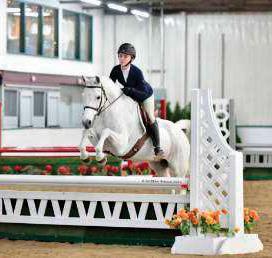














































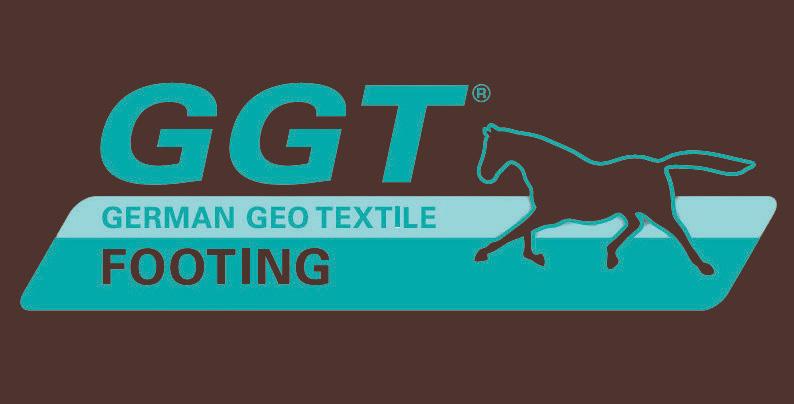
SEPT 26 - OCT 6 • PRINCE GEORGE’S EQUESTRIAN CENTER •UPPER
MARLBORO, MD


1 Smooches for D’Artagnan from rider Lilly Herzog • 2 With her own Floralie, Jole Kosloske wins North American League 1.15m Junior Jumper Final • 3 Andee Holland and her own Lochridge Prince were the Grand Adult Amateur Hunter Champions
• 4 Bethany Lee and Geoffrey Hesslink congratulate Caroline Signorino after her win
• 5 Mini Mick Jagger delighted everyone at Capital Challenge with trainer Leigha Schrader • 6 Taylor Landstrom and Elite Girl
• 7 Scott Stewart won his eighth WCHR Professional Finals








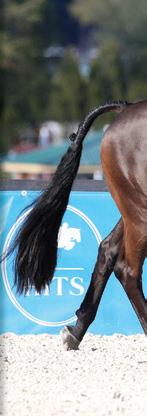

















































































































































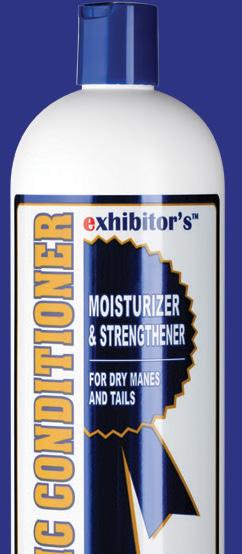










BY JOHN MINOPRIO
Reprinted with permission from the publisher
This photo-driven book is a visual celebration of CHIO Aachen, held annually in Germany since 1898.
The Three-Day Event, originally The Military and now called Eventing, was adopted at CHIO Aachen in 2007 following the success of the World Equestrian Games the year before. The cross-country course of 25 fences is readily accessible for spectators, with the last fence in the stadium. The world’s top riders compete. The Three-Day Event ourished in England due to the practical enthusiasm and generosity of two aristocrats, the Duke of Beaufort at Badminton, and the Marquess of Exeter (Olympic Gold Medal, 400 metres hurdles, 1928) at Burghley. Many eventing star riders are based in England and come to Aachen.
Sam Marsh, a legendary all-around horseman and teacher, had a favourite quote: “There is no secret so close as that between a rider and his horse.” A maxim for the Eventing rider, who must master dressage, cross-country and show jumping—on the same horse.






3


1 Jonelle Price on Killbunny Andy in 2022 • 2 Lauren Kieffer (now Lauren Nicholson) on Landmark’s Monte Carlo for the USA in 2018 • 3 Caroline Martin (USA) on Islandwood captain Jack

A colorful, engaging handbook chock full of all the right information for fitting English saddles to both horse and rider, in both clearly labeled pictures and precise words, ensuring comfort, health, and performance at a glance.

Everything you didn’t know you had to know with horses in your life.

Sensible steps to making vet visits stress-free.
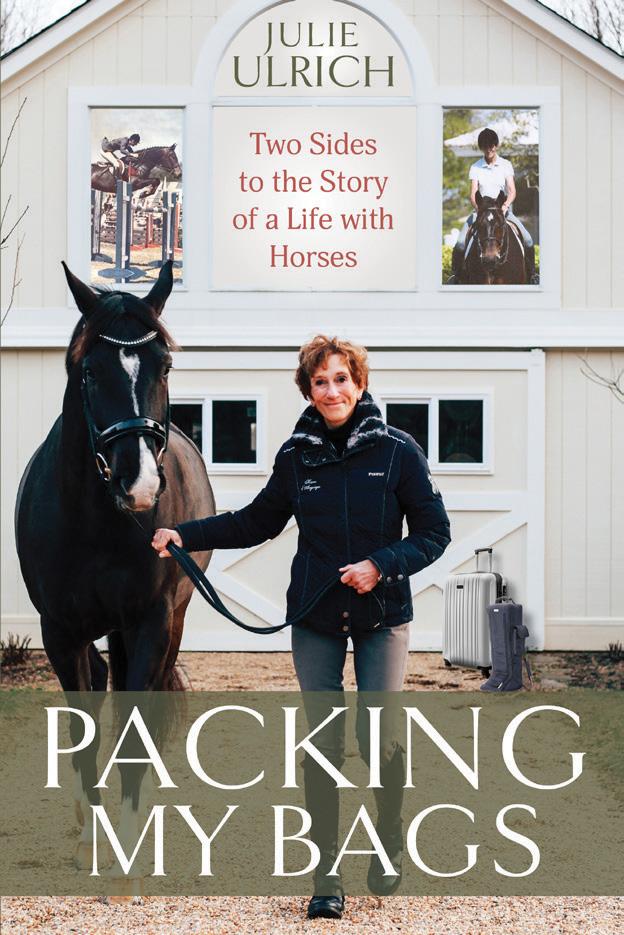
Practical knowledge sandwiched between fascinating stories.






































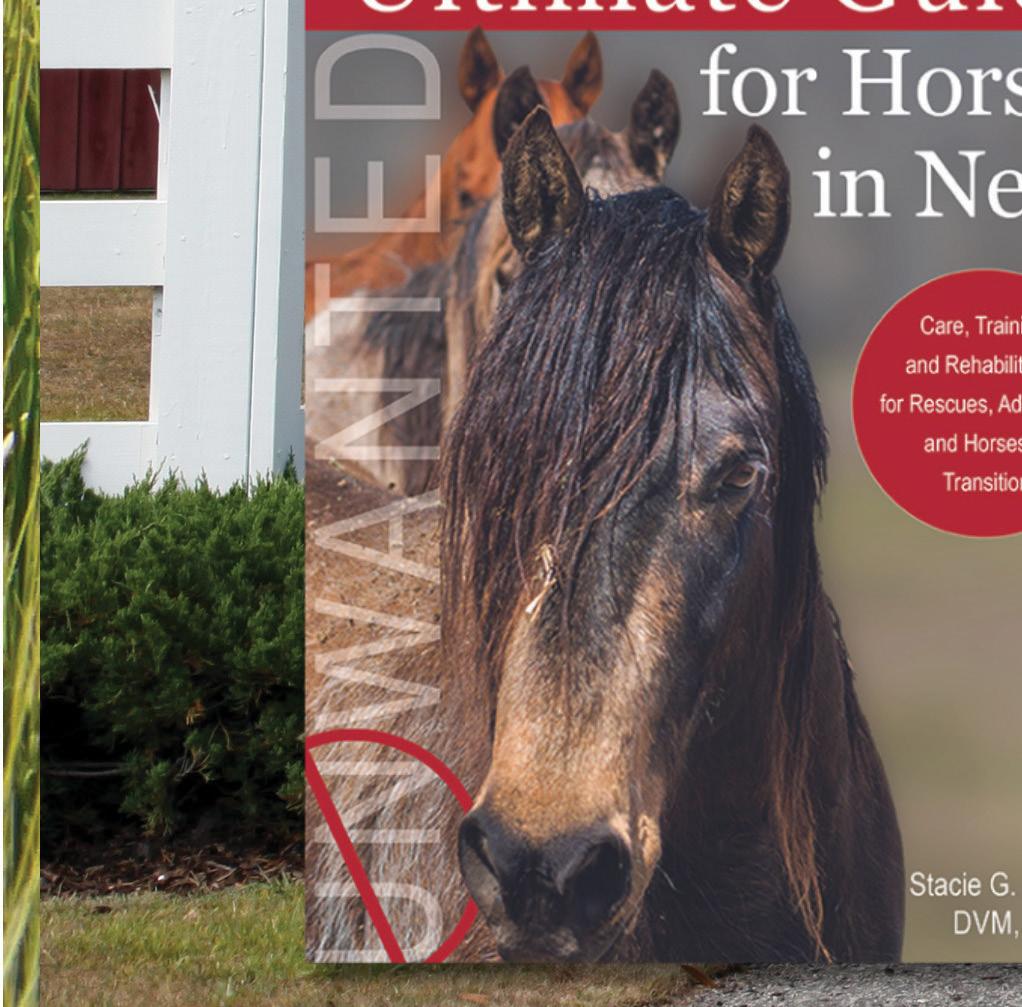


























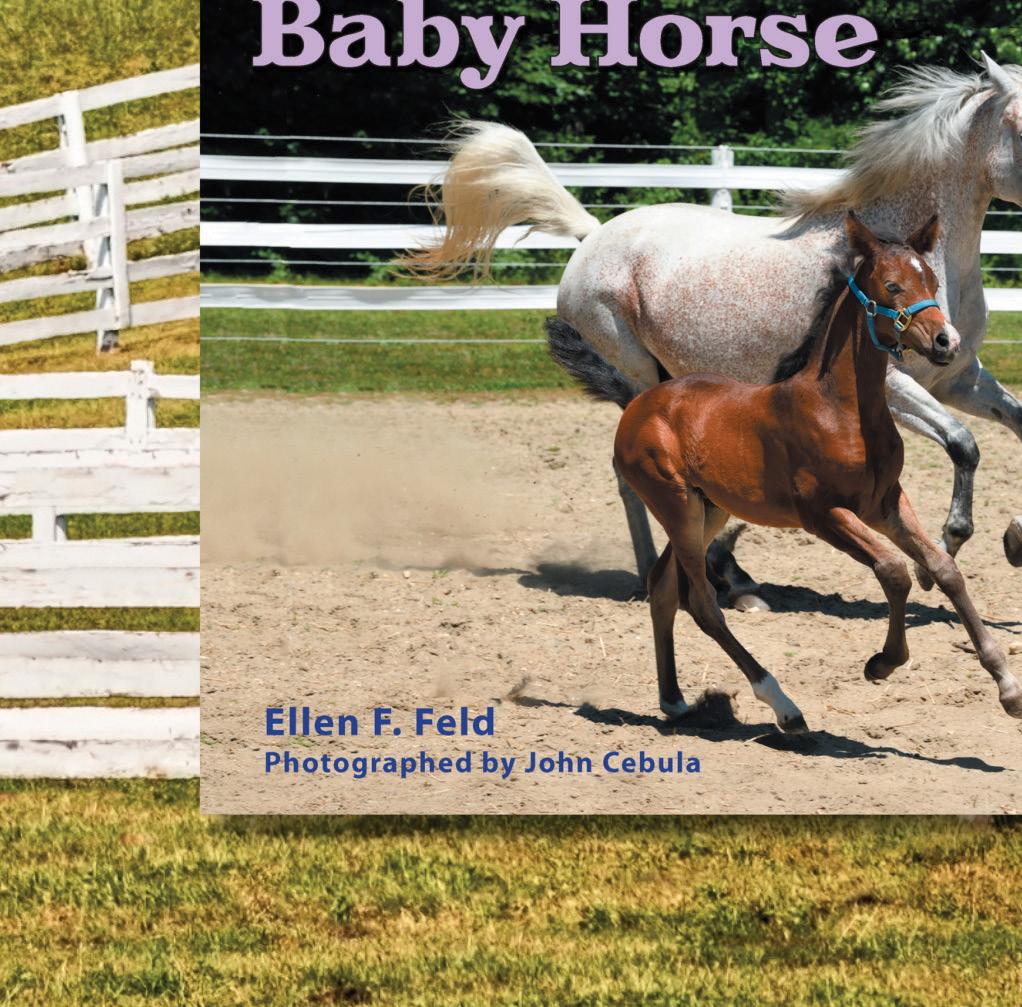


























2025 Tryon Welcome & Spring Series USEF Preview
Welcome 1 - National / Level 3 - March 20-23
Welcome 2 - National / Level 3 - March 27-30
Welcome 3 - National / Level 3 - April 3-6
Welcome 4 - National / Level 3 - April 10-13
Spring 1 - Premier / Level 6 - April 30-May 4
Spring 2 - National / Level 4 - May 7-11
EE Spring 3 - Premier / Level 4 - May 14-18
Spring 4 - National / Level 5 - May 21-25
Spring 5 - National / Level 6 - May 27-June 1
Spring 6 - Premier / Level 5 - June 3-8





















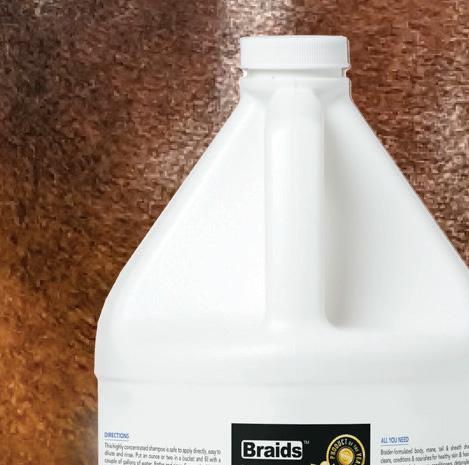

































To










~ Ruthann Smith Braider, Groom & Founder
~ Ruthann Smith Braider, Groom & Founder

















Teaching
Teaching
BY
Reprinted with permission from Trafalgar Square Books
STORMY, MISTY’S FOAL
“Paul and Maureen stood on tiptoe, peering in without breathing. They were utterly still, not wanting the scene to change. There, at the far end of the stall, stood Misty. She eyed them dispassionately, as if they belonged to another world and another time. Like a bird brooding a chick, she was hovering over a wise little, fuzzy little, scraggly little foal.”
—from Stormy, Misty’s Foal
(First Published 1963)

Ponies may have been wiped out, declared the headline of a front-page story in the Daily Times of Salisbury, Maryland, after a devastating storm struck the Virginia shoreline, including Assateague and Chincoteague Islands, on the first week of March in 1962. Many of the wild ponies on Assateague were killed, homes on Chincoteague were destroyed, and thousands of residents were evacuated. Misty was about to give birth. And Marguerite was in Austria researching her next book.
It was also less than nine months after the 20th Century Fox movie Misty had premiered on the island. Ralph Beebe, son of Grandpa and Grandma Beebe and uncle to Paul and Maureen, was at the Beebe Ranch, looking after Misty and the other ponies, and in the beginning, it seemed as though they might be spared. But by the early hours of the morning, a high tide hit Chincoteague and water began to enter Misty’s barn. Beebe decided to bring Misty, pregnant with her third foal, into his house, where she

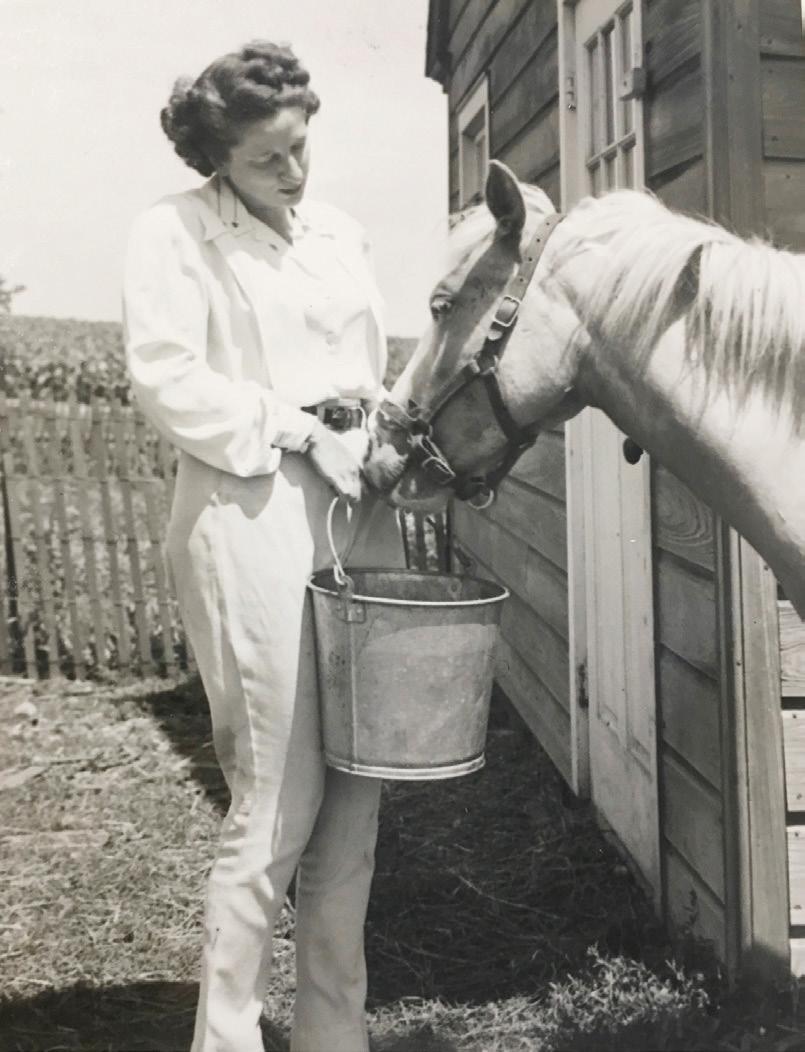
remained in the kitchen for three days, until the tides had receded enough that Beebe could drive her to a veterinary office in Maryland. Misty gave birth to her foal Stormy on Sunday, March 11, at Dr. Finney’s in Pocomoke, Maryland. The local paper reverentially described Dr. Finney as having “officiated at the

that there would be a book about the series of events.





1
2
3
expected blessed event.”
It was estimated that the storm caused over thirty million dollars in damage to Chincoteague (about two hundred and fifty million in today’s dollars) and raised grave concerns that typhoid might strike the island. President John F. Kennedy declared Chincoteague a federal disaster
area and dispatched civil defense workers who set up typhoid inoculation stations for residents and rescue workers. The Army and National Guard moved in to clear away mountains of debris from the destroyed businesses and homes—and the dead animals. A helicopter tour of Assateague Island revealed that at least seventy-five of the wild ponies had survived the high water and winds, although even more—including pregnant mares and foals—had drowned. The loss was no less than utterly devastating.
The press made much of the fact that Misty had weathered the storm stalled in the kitchen of Ralph Beebe’s home. (A bit less attention was paid to Ralph Beebe himself, though he was interviewed endlessly about Misty’s well-being during those critical three days that she was living in his house.) For his part, Beebe was quick to credit Misty for her tidiness, which was doubtless thanks to the many years she’d spent walking around inside Sid and Marguerite’s home in Wayne. Misty had left his family’s kitchen in remarkably good shape, Ralph reported, and even enjoyed a few privileges. “The only thing I did was let her drink out of the kitchen sink, which my wife would not approve of if she knew it,” said Ralph, who cleaned up the kitchen afterward.
Although, as previously noted, Marguerite had pledged not to write a “Misty Part Two,” she’d written Sea Star more than ten years before the storm (1949), and now clearly Mother Nature had delivered her another remarkable true-life sequel. There was no question
It took Marguerite a few days to get a plane ticket home from Vienna, where she was researching the book that would become White Stallion of Lipizza. (In a recorded 1968 “Meet the Authors” interview produced by Imperial International Learning, she said she learned of the storm from a newspaper while in Vienna.) Marguerite later rather dramatically recounted her feelings at being so far away at such a critical time: “I had to get out of Vienna! I had to get to Chincoteague! Misty was in danger! She might need me! How could I be thousands of miles away when Misty was going to have a baby! Already I felt like its grandmother!” (That last line appears in the book Stormy, Misty’s Foal, spoken by Maureen when she first views Misty and her baby.)
By the time Marguerite arrived in Chincoteague—stylishly attired in a fur coat and hat (duly noted by the press)—Misty had delivered her foal and Dr. Finney’s eight-year-old son David (who looked much like a young Paul Beebe) had been much-photographed, sitting on Misty and holding Stormy in the pictures that accompanied news of Stormy’s birth. When Marguerite’s editor Mary Alice Jones saw the photographs in Life magazine, she wrote to Marguerite: “The little boy looks like a charming prospect for a new human hero. And the frisky foal is a heartwarming bit of the animal kingdom!” Jones offered further encouragement: “I know that before too long another book laid in Chincoteague will come to delight the children, please the librarians and rejoice the heart of the publisher—not to mention give pleasure to the author who creates it!”
The story that Marguerite would tell in Stormy, Misty’s Foal included the devastation of the island that Marguerite witnessed firsthand, and she didn’t spare the distressing details. “It was a horrible heartbreaking sight, mauled by the sea!” Marguerite wrote. And the fact
that the storm hit at a time when Misty was due to foal was additional, actual drama that would end up in the book. “Nothing had to be made up! Neither fear nor danger nor suspense!” Of course, that wasn’t exactly true. As with Misty of Chincoteague, the facts of Stormy were very much intermingled with fiction, as it was of course Ralph Beebe, not Paul nor Grandpa (both of whom were dead), who had kept Misty safe in the storm.
Marguerite imagined how Grandpa Beebe might comfort Maureen and Paul as the storm raged. “‘There, there children, hold on,’ Grandpa soothed. ‘Buckle on your blinders and let’s think of Fun Day.’” she wrote. Marguerite willed Grandpa Beebe and Paul back to life, and Grandma too, in the role of looking after Misty and putting her in the kitchen of their house. “‘I’ll stay with Misty,’ Grandma announced without turning around. ‘Much as I dislikes treating ponies like folks, I can admit to a kinship when she’s having a baby.’” The touching illustrations by Wesley Dennis of Maureen riding Misty up the stairs of the house in the storm with Grandpa waiting to receive them showed the family alive and well and exactly where Marguerite, and her readers, wanted them to be (still).
Marguerite returned to the facts of what actually happened, when in the book Misty is driven to Dr. Finney’s in Pocomoke, Maryland, to deliver her foal.
When it was time to name Misty’s new baby, schoolchildren from across the country actually did write hundreds of letters with suggestions of names. Although they arrived addressed to Grandpa and Grandma Beebe and Maureen and Paul in the book, they were letters that Ralph Beebe received in real life, and they included this one: “If I owned Misty, I would name her colt ‘Stormy.’” Ralph and Marguerite jointly chose the name Stormy.
How was Marguerite able to retell a story that so clearly collided with recent history? After all, the deaths of both Paul and Grandpa Beebe had been reported in local newspapers. But the fact that they were long dead when Stormy, Misty’s Foal takes place seems to have passed
unmentioned not only by the press but even Chincoteaguers themselves. Was it that Marguerite simply did not want to let go of the characters whom her readers had grown to love? Or did she want to pretend their lives, and her life, hadn’t changed since the time she first met them so long ago, when Paul and Grandpa were still alive, and Misty, Maureen, Marguerite, and Wesley Dennis were still (fairly) young? Everyone in Chincoteague, it seemed, (also) wished that it was so. Of course, Marguerite, as always, did a great deal of research about the storm and its aftermath, and the facts

Stormy and Misty made many public appearances to raise funds to benefit the islands’ recovery
are meticulously noted as she adroitly balanced what was real with what she imagined had transpired. She composed a long list of questions for Ralph as to exactly what happened to Misty during the storm, and his answers became Paul’s words in the book. “What about drinking water? How did you feed her? Was Stormy born on a Sunday? Where did the birth take place?” Marguerite queried. Enough of the details were so well researched that her publishers boldly asserted: “Like all Marguerite Henry stories, it is based upon actual fact,” on
the book’s flap copy. Or as Marguerite said at a banquet held in her honor at a school book fair, her books were “90 percent fact and 10 percent little bridges” (The Pantagraph, November 22, 1964, Bloomington, Illinois).
The reviews of Stormy were uniformly positive (“The author capably has balanced extremes of grief and courage and joy, while keeping her story entirely real," wrote reviewer Jane Thomas for the Star Tribune of Minneapolis) and advertisements echoed Marguerite’s assertion that the story of Stormy was real (“based on actual fact” and “the true and thrill-packed story”). The same newspapers that reported that Ralph Beebe was the owner of Stormy also reported that the story of Stormy was real. The actual actual facts failed to affect the book’s popularity or dim its appeal.
Book sales were bolstered by occasional in-person appearances of real-life Misty and real-life Stormy while Marguerite and Wesley Dennis once again participated in book signings all over the country. Stormy, Misty’s Foal was truly a resounding success: number three on the “New York Times Best Sellers” children’s books list in November 1964, besting such legendary books as Dr. Seuss’s The Cat in the Hat and Maurice Sendak’s Where the Wild Things Are. (The number one book that year was Mary Poppins by P.L. Travers.)
Lettie Teague has been The Wall Street Journal's wine columnist since 2010. Before joining the Journal, Teague was the executive wine editor and columnist for Food & Wine magazine. She is the author of two books, Wine in Words and Educating Peter, and co-author and illustrator of Fear of Wine. Her writing has won three James Beard Awards, including the M.F.K. Fisher Distinguished Writing Award. More importantly, Teague has been a fan of bestselling children's book author Marguerite Henry since she was nine years old. A horsewoman as well as an oenophile, Teague's first horseback ride took place around the same time as her first Marguerite Henry book (Born to Trot) and she, like Henry, grew up in the Midwest aspiring to be a writer. “Perhaps that's the biggest reason why I want to tell Marguerite's story,” says Teague. “I feel like so many of the same things have shaped our lives.”











































































• An Unparalleled Educational Program.
• The Largest Horse-Related Trade Show in North America.
• The “Marketplace” featuring quality consignments for horse & rider.



• The Fantasia (sponsored by Equine Medical & Surgical Associates) — Equine Affaire’s signature musical celebration of the horse on Thursday, Friday and Saturday nights.
• Breed Pavilion, Horse & Farm Exhibits, Horses for Sale and Demonstrations — Enjoy meeting horses of all shapes, sizes, breeds, colors, and disciplines!
• Cowtown in Cooper (sponsored by Western Life Today) — Special presentations catering to cow and ranch events. Don’t miss this educational western lifestyle experience!
• The Versatile Horse & Rider Competition — A fast-paced timed and judged race through an obstacle course with $5,500 at stake!
• Adoption Affaire — Find and adopt your next horse at the Adoption Affaire, affiliated with the Right Horse Initiative!


• The Great Equestrian Fitness Challenge — A fun activity for equestrians to exercise their barnyard skills and win prizes, no horses needed!
• NEW! Donkey Extravaganza — Learn all about donkeys through clinics, demos, educational exhibits, and more!
• NEW! Breed Bonanza — A unique under saddle class showcasing the best features of horses from all breeds!
• Youth Activities, a fun and educational College and Career Fair, and much more! Featured Clinicians:


















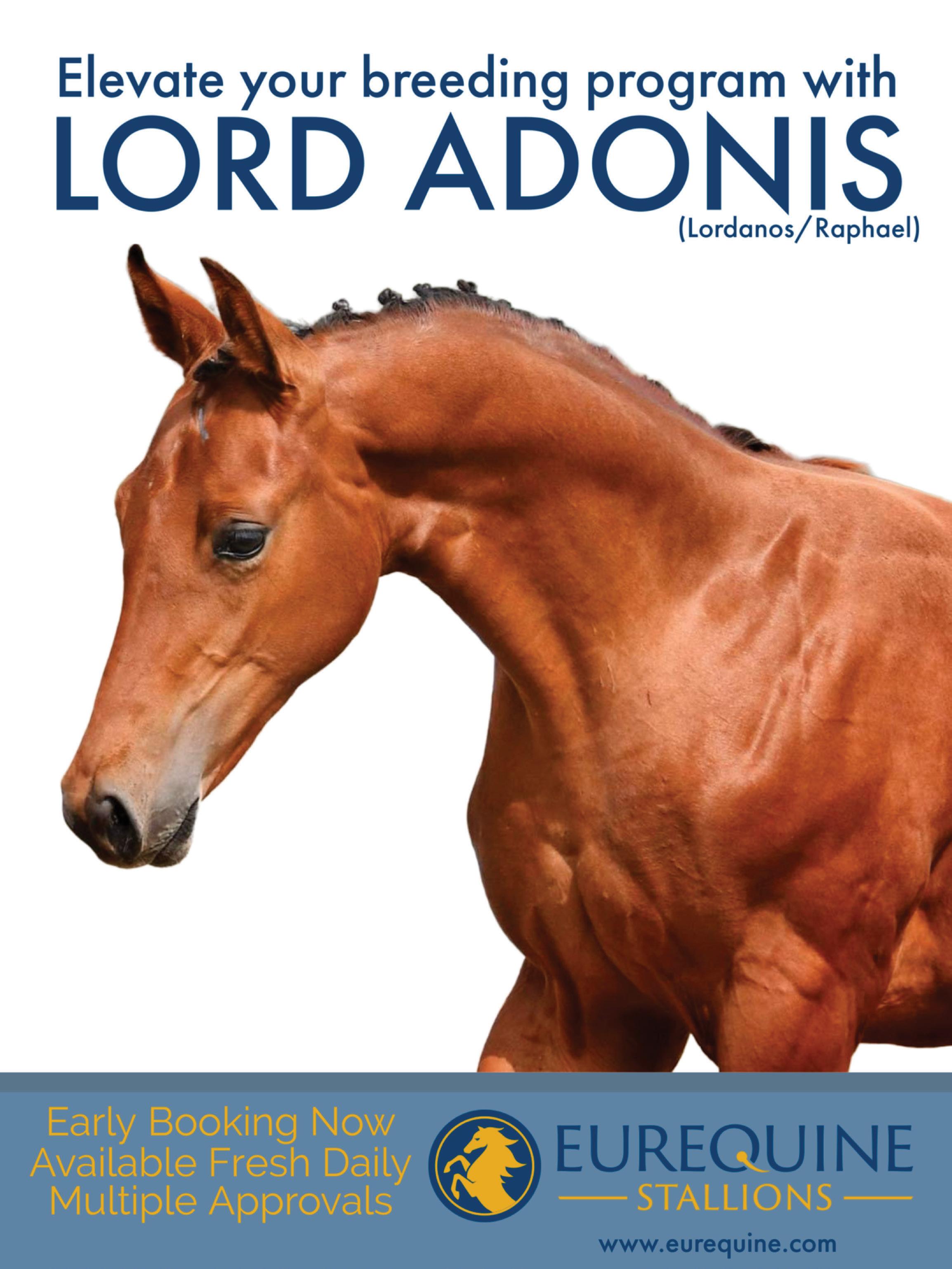



• Paddocks




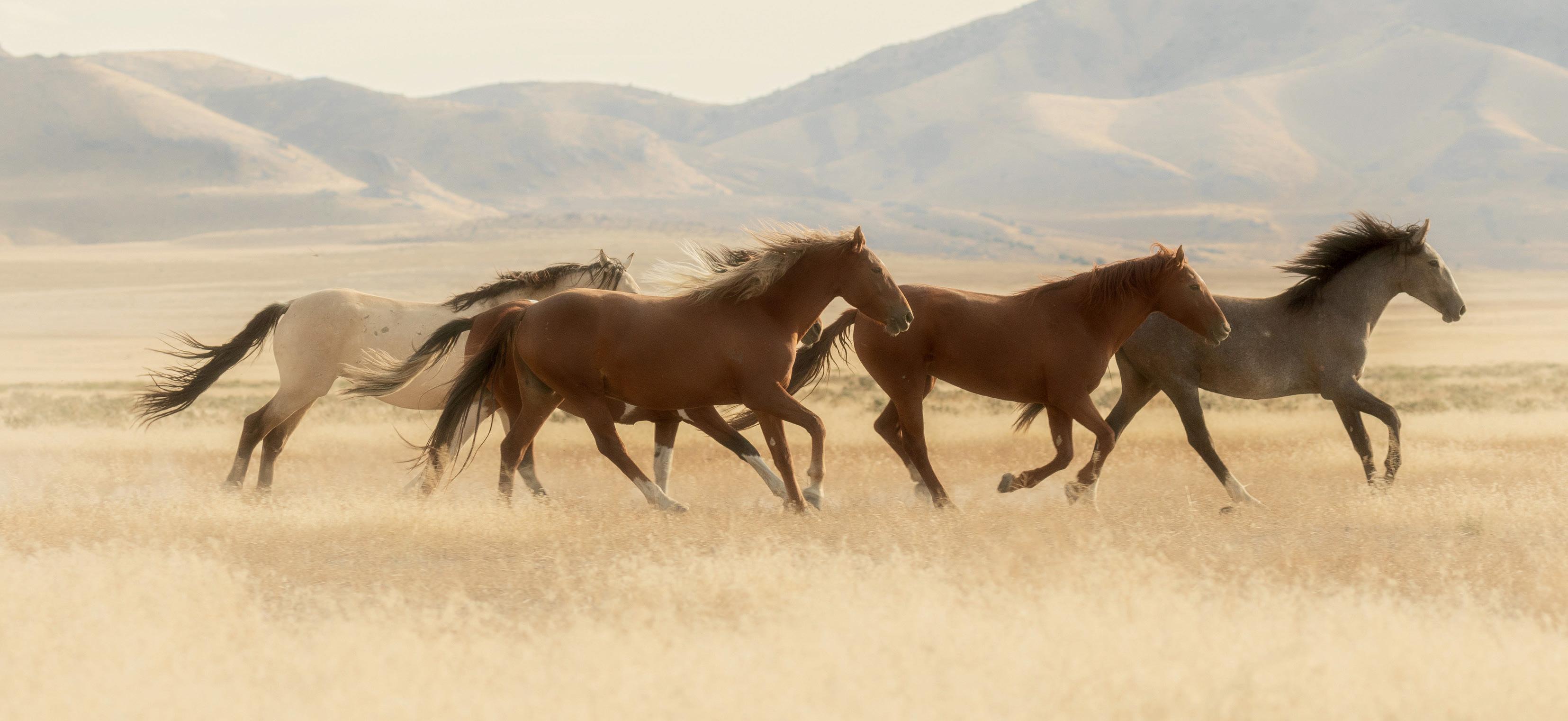












STATUS: Amateur
PROGRAM: Marketing Consultant, LGT Consulting LLC & Former Hedge Fund Executive
As a horsewoman, I am most proud of how I have developed as a competitive amateur rider. I am more thoughtful in the ring and more effectively competitive in the moment. • As a horsewoman, I would most like to improve my knowledge about the animals. I have loved having horses at home because it has helped me learn every day about their care and health.•The best way I balance horses and a professional career is by I trust my trainers 100% to prepare my show horses for me in the appropriate way since I am not riding all the time. I ride at Tibri, with Annie Dotoli and Aster Pieters. They are incredible. I rode with Annie’s parents, Fran and Joe Dotoli,

THE
MOST IMPORTANT QUALITY FOR A STUDENT OF OUR SPORT TO HAVE IS
Love for horses and patience in both your own and your horse’s learning.
A friend told me that progress is not linear and that really resonated for me.

as a junior.•I serve the horse community by being active with the USHJA and trying to have a positive impact on those around me, whether that be as a positive role model to juniors in the barn or a friendly amateur competitor at a show.
•My best piece of advice for young riders is trying matters. Kindness matters. Resilience matters. Empathy for your horse and fellow competitors matters. It is never the horse’s fault. •The best part about living in New England is apple cider donuts.•I’m a sucker for any horse.•The horse person I most admire is Aster Pieters. He is typically a man of few words, but his words always matter. And he ALWAYS tells me to do the inside turn. He is the most knowledgeable horse person I know, never stops working for the best for the animals, and understands horses in a way that most people don’t.
•One of the best horse names I’ve ever heard is Iworka 925 (barn name Dolly).
This is my mare’s name and is a play on “9 to 5” by Dolly Parton. I love all things Dolly!•For our industry to thrive in 2025 and beyond, we need to listen and continue to evolve.
•My absolute favorite shows are HITS Hudson Valley because of all the amazing improvements and HITS Ocala because I live closer to the barn and get to ride every day when we are in Florida.
I also love New England finals because it has such unique camaraderie.•My favorite thing about being on the USHJA Board of Directors is knowing that I can help guide the direction of the sport through thoughtful discussions and governance.





WEEKLY OPEN JUMPERS & NATIONAL GRAND PRIX
• $2,500 Adequan Open Welcome

• $25,000 Alliant Private Client Cup
• $15,000 STX Open Speed
• $80,000 Grand Prix (Weeks 1-5 & 7-9)
• $100,000 Grand Prix during Ocala Masters & HITS Ocala Championship (Weeks 6 & 10)
JUNIORS & AMATEURS
• NEW — Itty Bitty Jumpers
• Weekly Jumper Classics
• Big Prize Money Classes , especially during HITS Ocala Championship
YOUNG HORSES
Five-, Six-, & Seven-Year-Old Classes with advantageous entry fee pricing!

OCALA HOLIDAY SERIES
NOVEMBER 27 DECEMBER 22, 2024
OCALA WINTER CIRCUIT
JANUARY 14 — MARCH 23, 2025

JUMP INTO WINTER WITH HITS — The 2025 HITS Ocala Winter Circuit promises to be the best yet, with more than 400,000 square feet of renovated and redesigned arenas courtesy of Wordley Martin, as well as an action-packed schedule of highlights. Top jumper offerings include impressive prize money opportunities, plus designated classes for developing horses and riders, while three weeks of WCHR competition, USHJA International, National, and Pony Hunter Derbies, and new qualifiers for the 2025 ClipMyHorse.tv Hunter Classic Final make HITS Ocala the premier hunter destination of the season.
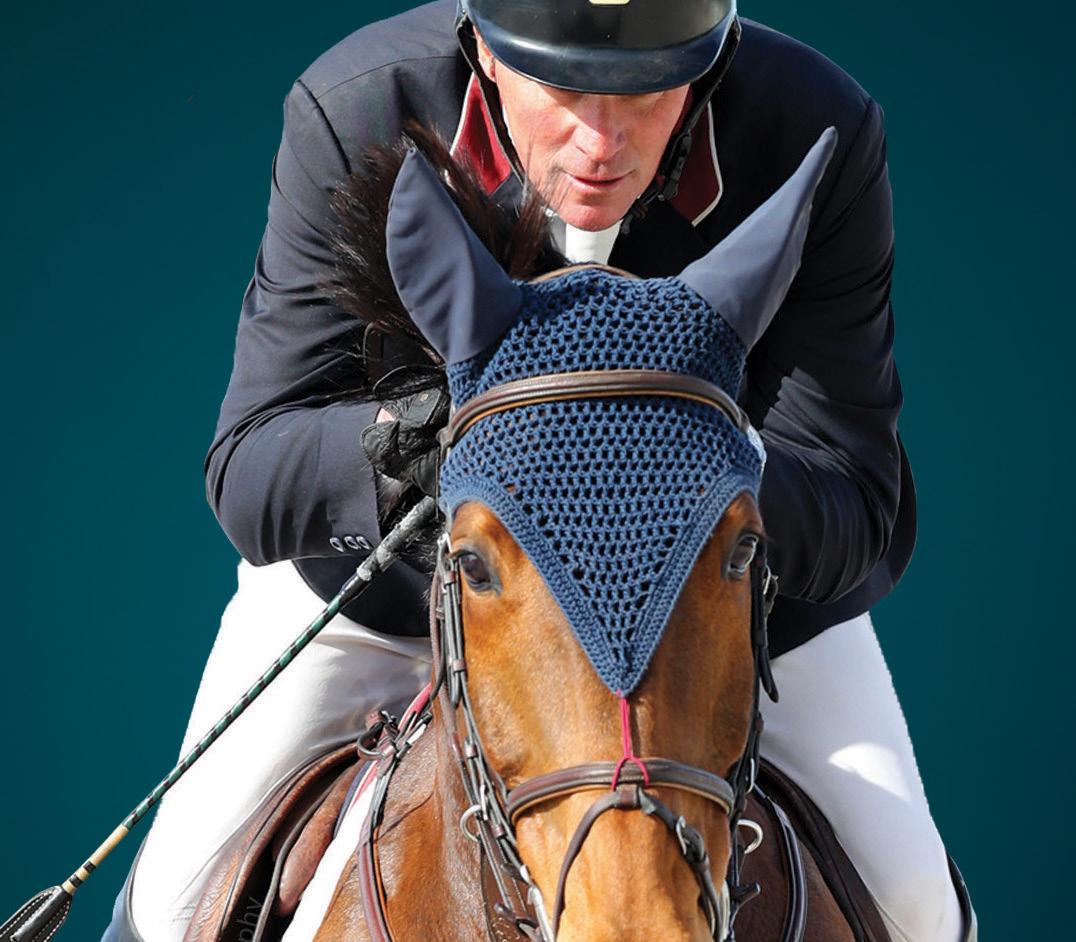





THREE WCHR WEEKS
• HITS Ocala Holiday Series
Ocala Holiday Classic — December 11-15
• HITS Ocala Winter Circuit
Ocala Winter Classic — February 4-9


Ocala Winter Celebration — March 11-16
USHJA INTERNATIONAL HUNTER DERBIES (Weeks 4 & 9) presented by Great American Insurance Group
NEW — CLIPMYHORSE.TV HUNTER CLASSIC QUALIFIERS
• HITS Ocala Holiday Series
Ocala Holiday Classic — December 11-15
• HITS Ocala Winter Circuit
Ocala Winter Classic — February 4-9
Ocala Winter Celebration — March 11-16

Top 3 riders qualify for the $200,000 ClipMyHorse.tv Hunter Classic at HITS Hudson Valley in September 2025
USHJA OPEN NATIONAL (Weekly) , JUNIOR/AMATEUR NATIONAL, & PONY HUNTER DERBIES (Weeks 4&8)
Plus, additional weekly derby classes for developing horses and riders sanctioned by The League, presented by Marshall & Sterling Insurance.











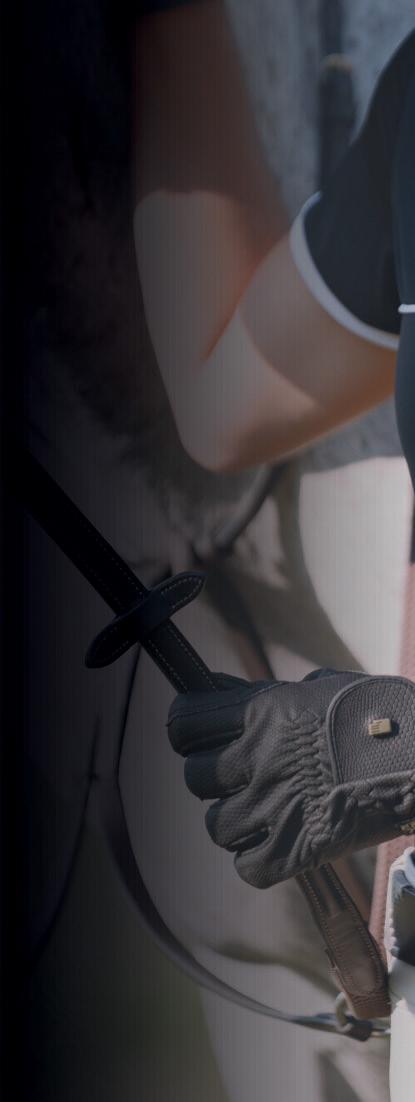

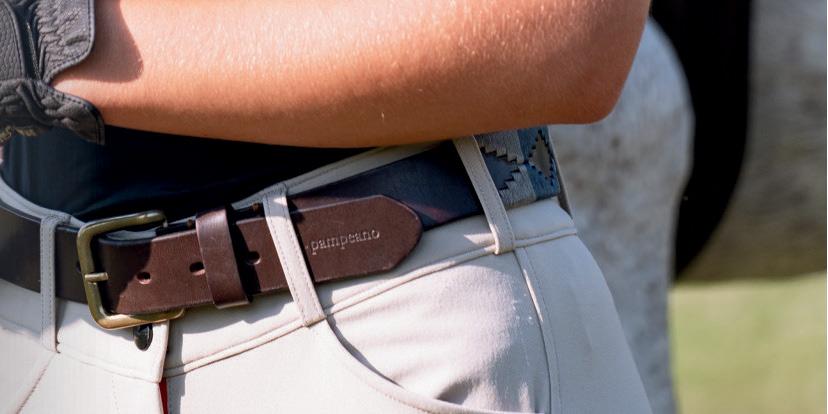





































































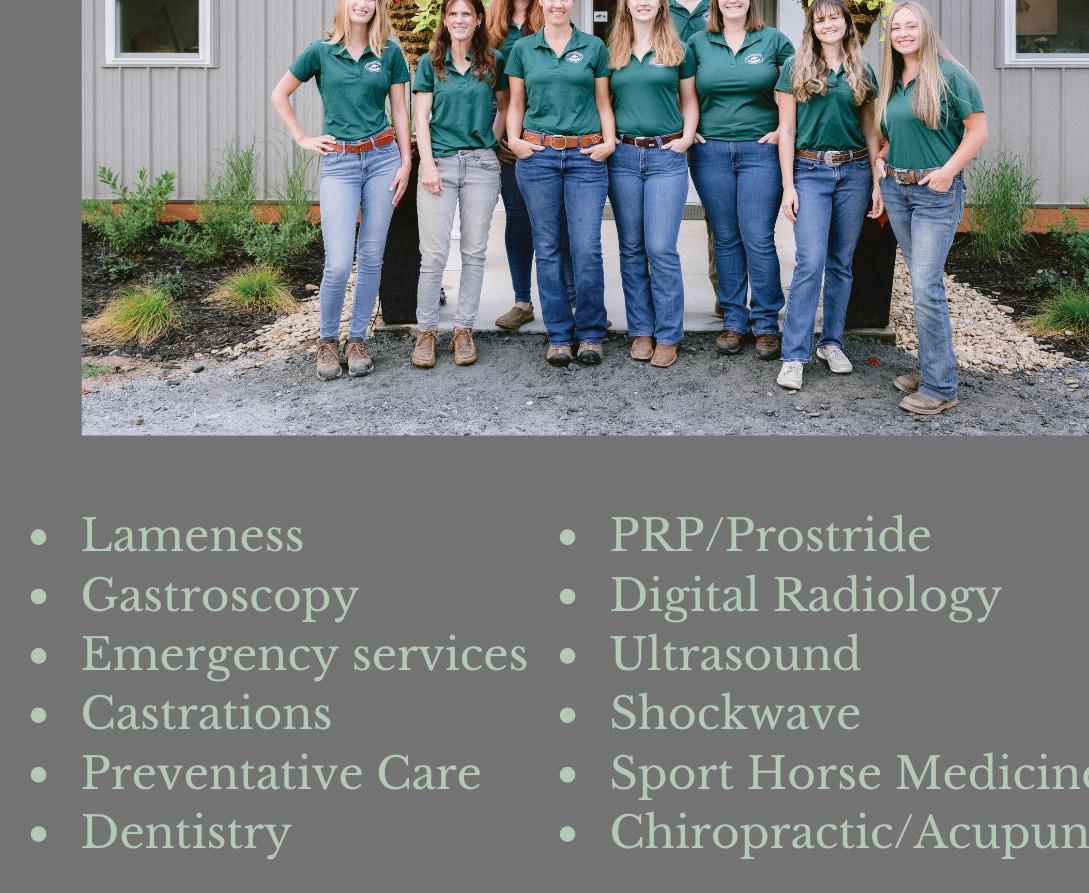









“When My Horses Are Happy, I Feel a Huge Difference”
WORDS: MARLEY LIEN-GONZALEZ
ADELLE ALLETTO is not the average junior rider. At just 15 years old, she’s developing her own string of horses with professional aspirations. With 10 horses in the program at her family’s Lifestyle Show Stables, Alletto spends several hours in the saddle each day, focused on improving not just her skills, but furthering the training of each of her horses. Like most equestrian peers of her age, Alletto wants to have fun in the ring, but her first priority is always her horses and giving them the opportunity to shine and have good experiences at shows. “You need to be having fun because you need to have a good mindset so that your horse is in a good mindset. But for me, it’s horse showing. So you need to be showing your horse. It’s not always about me,” Alletto tells The Plaid Horse.
Not everyone her age is working with young or inexperienced horses and bringing them up through the levels, but Alletto finds the challenge extremely rewarding. One special horse, MTM Grateful, whom Alletto credited for helping her grow and learn the most in the sport so far, started in the 2′6″ hunters with her and they worked their way up to a win at the 2024 Devon Horse Show in the 3′3ʺ Junior Hunters.
Another horse, Central Park West, brought Alletto from the Short Stirrup to the Children’s Hunters and helped her realize that she wanted to take the sport a step further.
“He was the main building block for me as a little lesson kid who was just starting to show, and that made him really, really special,” she says.
IT STARTED WITH PONY RIDES (AS IT OFTEN DOES!)
Horses have always been a part of Alletto’s life. When she was little, she used to do pony rides at a local barn in Miami. When Covid brought the world to a standstill in 2020, Alletto’s love of animals drew her back into the sport, this time at a more active level.
When her parents recognized horses were no longer just a hobby for their daughter, they relocated from Miami to the horse capital of Ocala, FL.
“My whole family doesn’t really do anything halfway. I just went along at first, and then eventually, riding became more and more serious for me. Of course, I can’t say no to horses, so it naturally became something bigger than we thought,” says Alletto.
The goal of moving was to allow Alletto to develop as a rider and deepen her education of the industry. But at Lifestyle Show Stables, the Alletto family’s farm based in Ocala, “the horses are ultimately the customers,” says trainer Crystal Young. “I can’t stress how important our horses’ health and happiness is to our success–we do everything to put them first,” Young tells The Plaid Horse Alletto’s private program allows for her horses to be the absolute focus, with individualized care, and a fully customized training process. “And it shows,” says Young. “In my 25 years as a professional, I’ve seen the amount of unnecessary preparation that goes into horse

“Physically, she’s a great athlete. Mentally, there’s nothing in her way. She’s sharp as can be.”
— MIKE MCCORMICK, ON ADELLE ALLETTO
showing–but only one of our horses, a hunter, lunges before a show. That’s the extent to which we have to prepare them.”
In between classes, they take the time to bring their horses home to relax. Alletto hand grazes her animals after riding, and learns the ins and outs of horse care and barn management. This fall, Alletto and her horses stayed at home during Indoors season to reset and go back to the basics. Young says, “It’s not just about showing. We’re not here to ride machines. We’re doing it the right way.”
“When my horses are happy, I feel a huge difference. It translates to my riding,” says Alletto, who adds that she feels pressure to be a student and learn while also teaching the horses at the same time. To combat the pressure, she reminds herself: “I want to give them good rounds, good records, but I know it’s not always going to be perfect. And
that’s more than okay.”
It’s all a balance for Alletto, and when she enters the show ring, “I need to have reasonable expectations for myself, but at the same time, I want to be able to show my horse to the best ability and give them the chance to win. I never expect them to win on day one, but I want to always be improving so that when they have the capability to win, I can do well for them.”
Alletto is focused on getting used to handling pressure but her team thinks the sky’s the limit for the young rider. “Adelle has all the pieces,” says Young. “She can go as far as she wants. She’s naturally talented, she has a strong work ethic, and she’s so disciplined.”
Rain, sickness, and other obstacles don’t stop Alletto from showing up to the barn. She attends online school so that she can make her studies work around her riding schedule. There are typically ten or more horses with Lifestyle Show Stables at a given time, and she puts her



all into riding as many of the horses as possible, as often as she can.
The benefit of riding different horses, and in all three rings, has contributed to Alletto’s rapid growth and success. In just four years, she’s gone from starting to get back into horses to many blue ribbons in the Junior Hunters and the equitation, and moving up to the 1.20 m Junior Jumpers. She has her eyes set on more, and would like to continue moving up the jumper levels as well as qualify for the major equitation finals next year.
Mike McCormick of MTM Farm, who helps Alletto and has matched her to a lot of her horses, shares Young’s sentiments that Alletto’s future is bright.
“Physically, she’s a great athlete. Mentally, there’s nothing in her way. She’s sharp as can be. She has understood every bit of this,” says McCormick. “So the mechanics are all in place and they’re putting miles on her rapidly.”
But Alletto gives the credit to the people working with her toward her goals. “The whole team has definitely given me and my horses every advantage, and I am very grateful to everyone involved,” she says.
Concludes Young, “I’m training her to do anything and everything.”









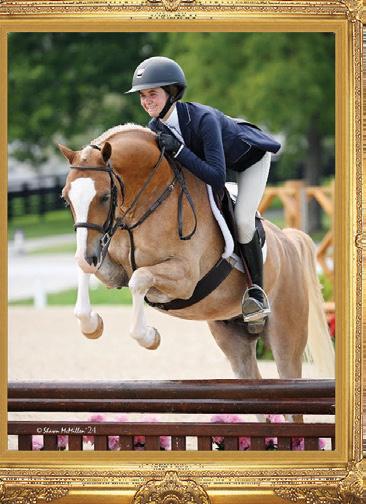

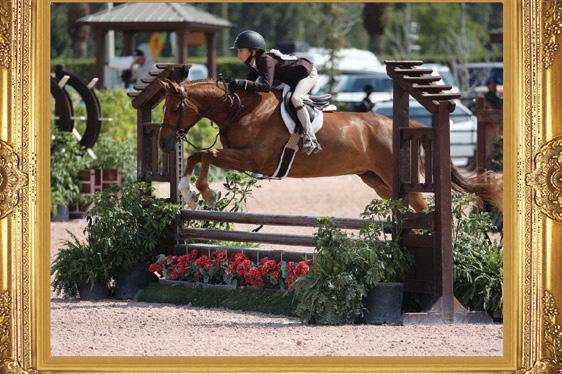

















14.2h Connemara-Welsh Cross Stallion
Sire of 2022 & 2023 Devon Pony Hunter Breeding Champion Filly Best Young Pony at USHJA Young Horse Championships and of Devon, Upperville, & USHJA Zone Championships
Canadian Crown Royal
12.2h Half Welsh Stallion
*Telynau Royal Charter x Northwind Copy Me (Blue Fox / Blue Rain)
Successfully Shown at Devon & Royal Winter Fair Sire of Devon Reserve Champion
*Telynau Royal Charter
13-7/8h Imported Welsh Stallion
*Only Frozen Available*
USEF Leading Pony Hunter Breeding Sire, over 10x
USEF Leading Pony Hunter Sire
Sire of many Pony Finals winners, USHJA Zone, USHJA Young Horse Championships, Devon, & Upperville Champions
Royal Party Shoes
12.2h Half Welsh Stallion
*Telynau Royal Charter x Tristans Party Shoes (overall Pony Finals Grand Champion) Sire of Devon and Upperville Champion, with limited foals on the ground
*Telynau Gallant
12.2h Imported Welsh Stallion
Sire of Devon, USHJA Zone, & Upperville Champions
Missy Jo Hollingsworth
Saddle Lake Ocala
859.750.7568





Think beyond the stable and protect your vehicle’s interior with WeatherTech’s Cargo Liner. This premier liner is custom fit to the contours of your cargo area to keep sand and dirt from equestrian gear contained. Discover dependable solutions fit for your lifestyle at WeatherTech.com.
